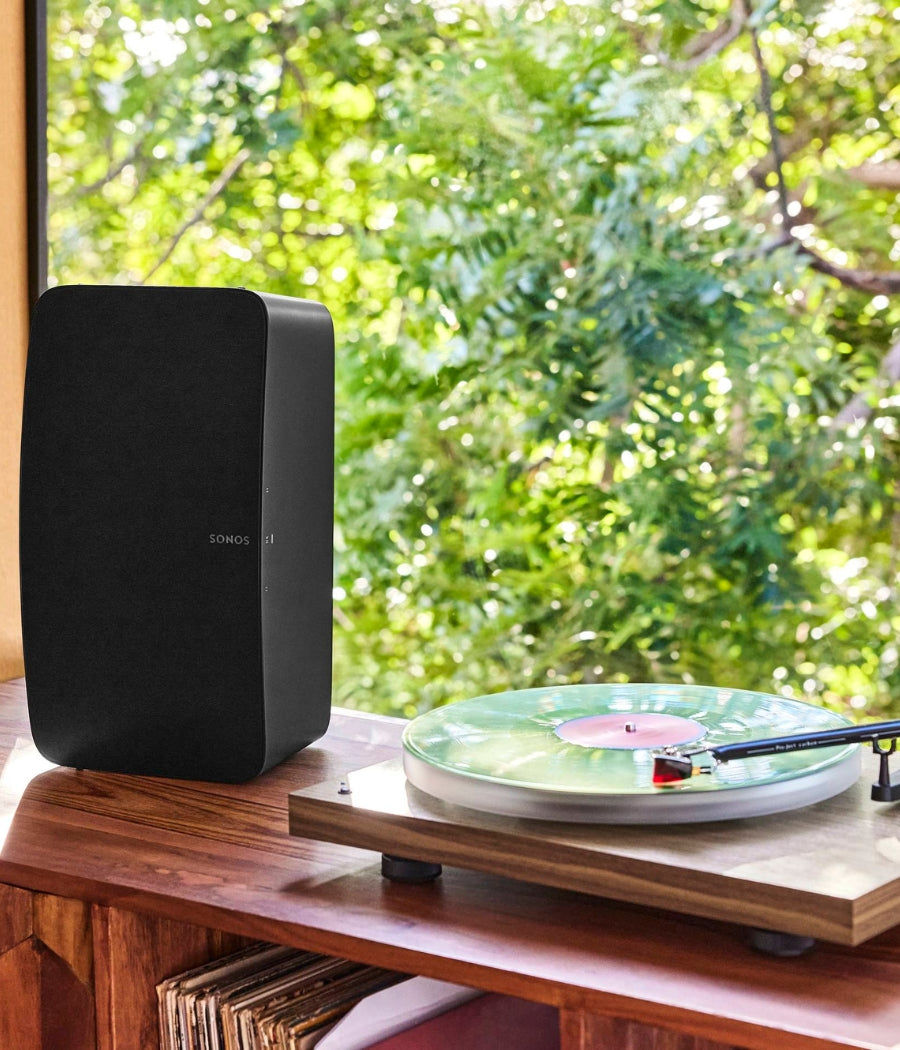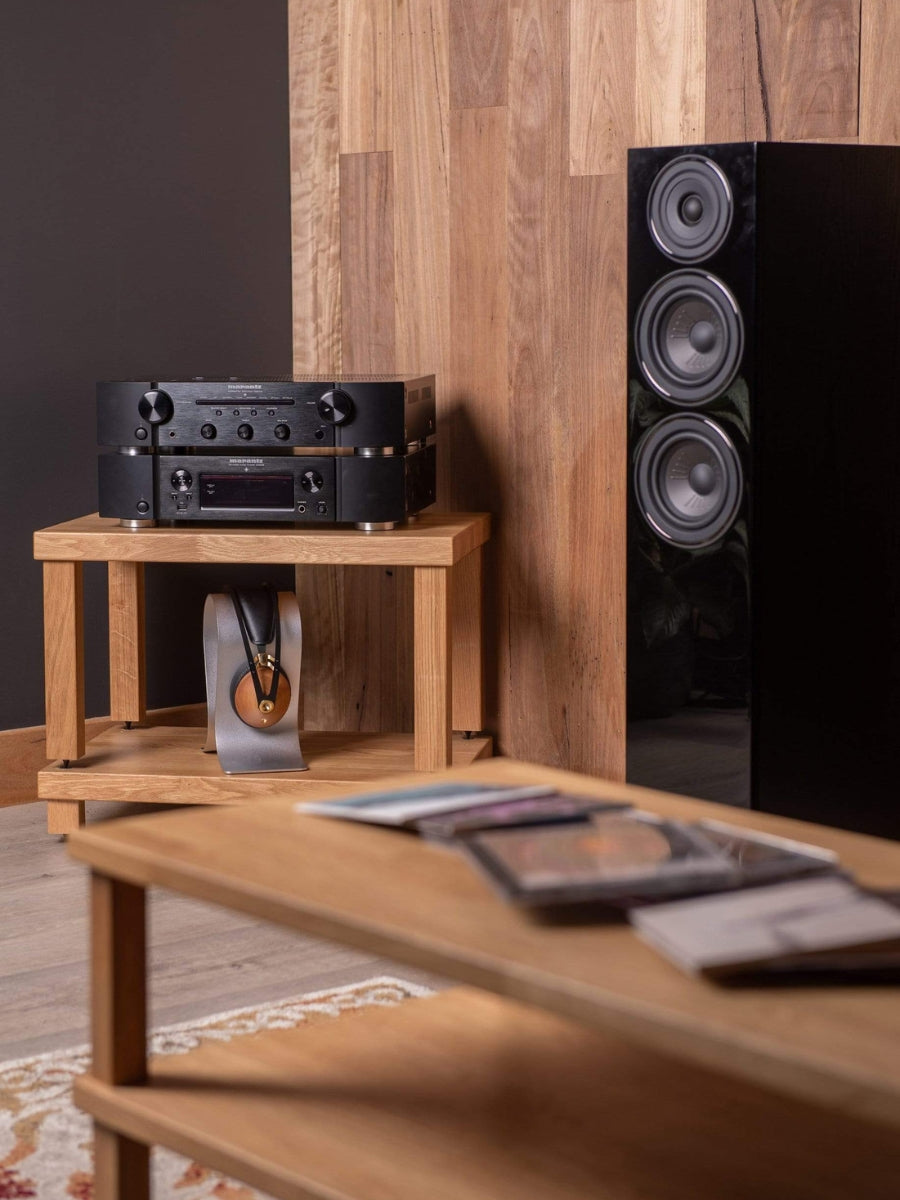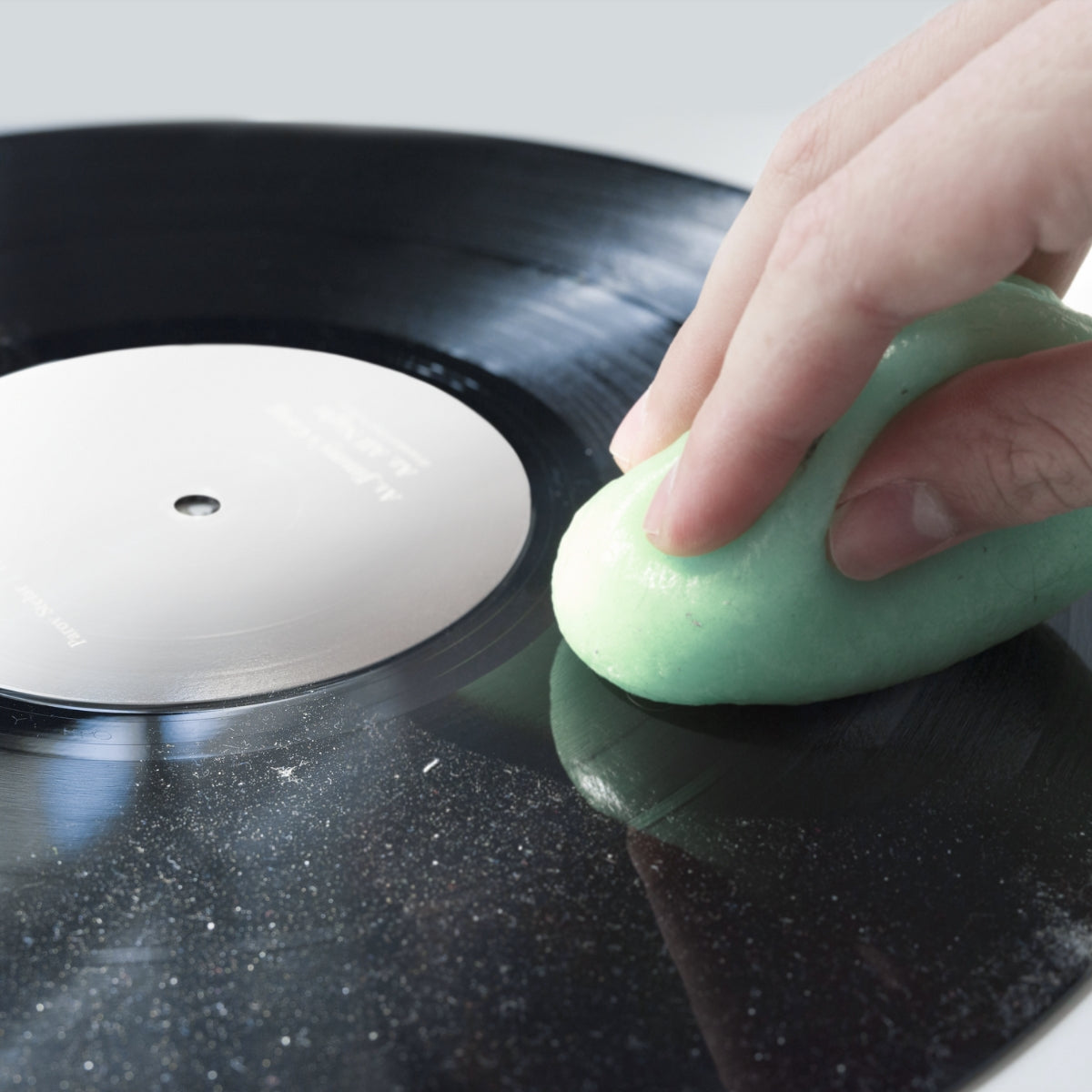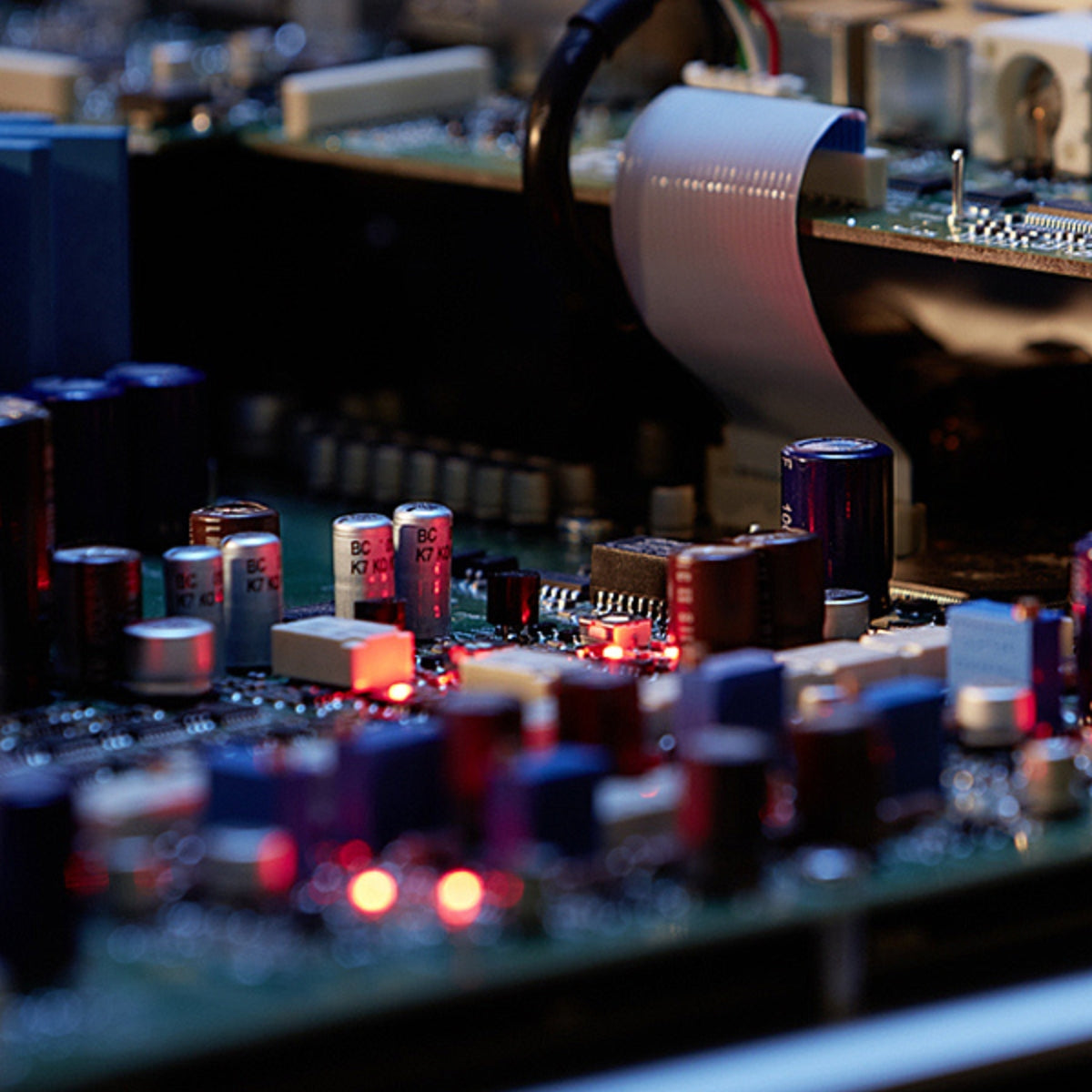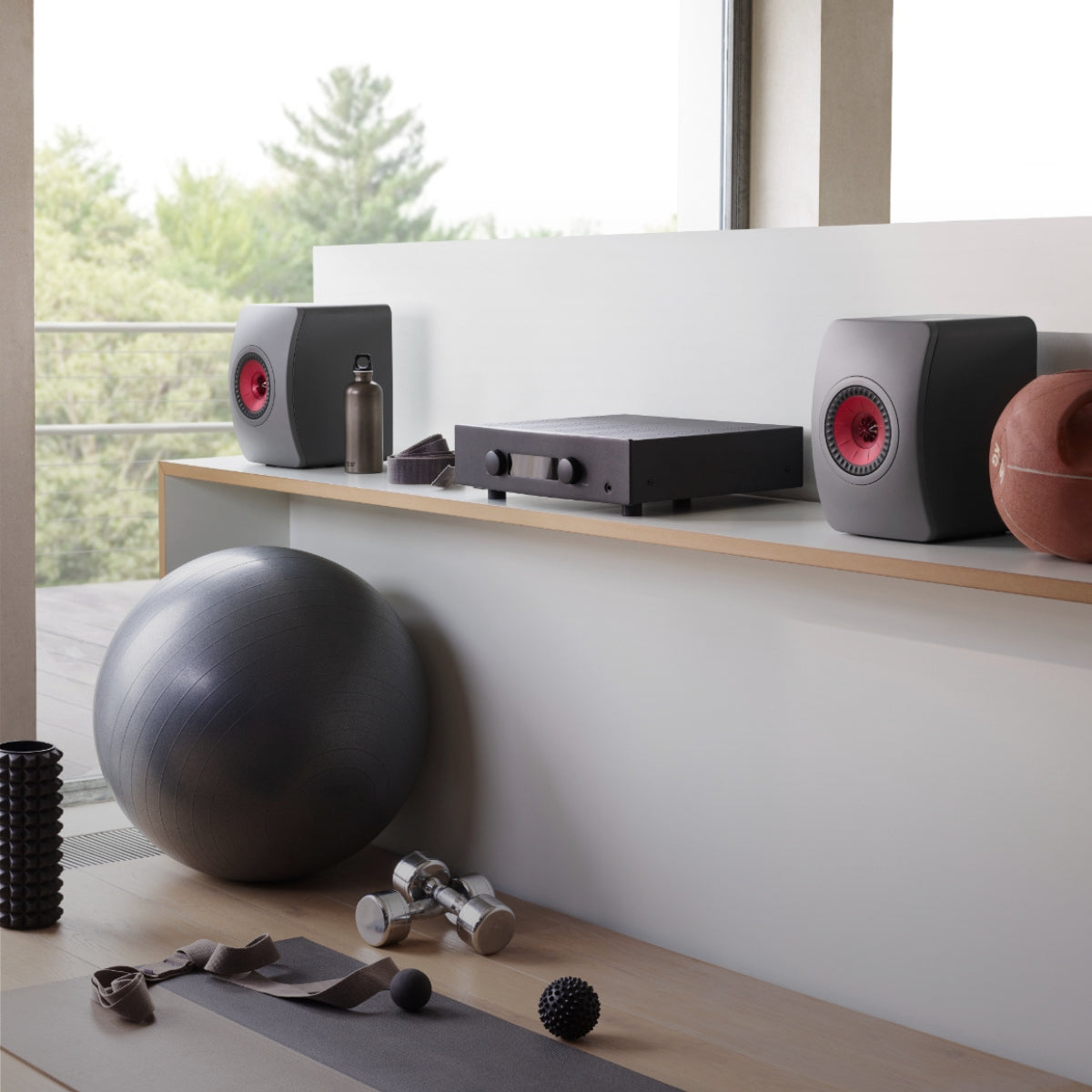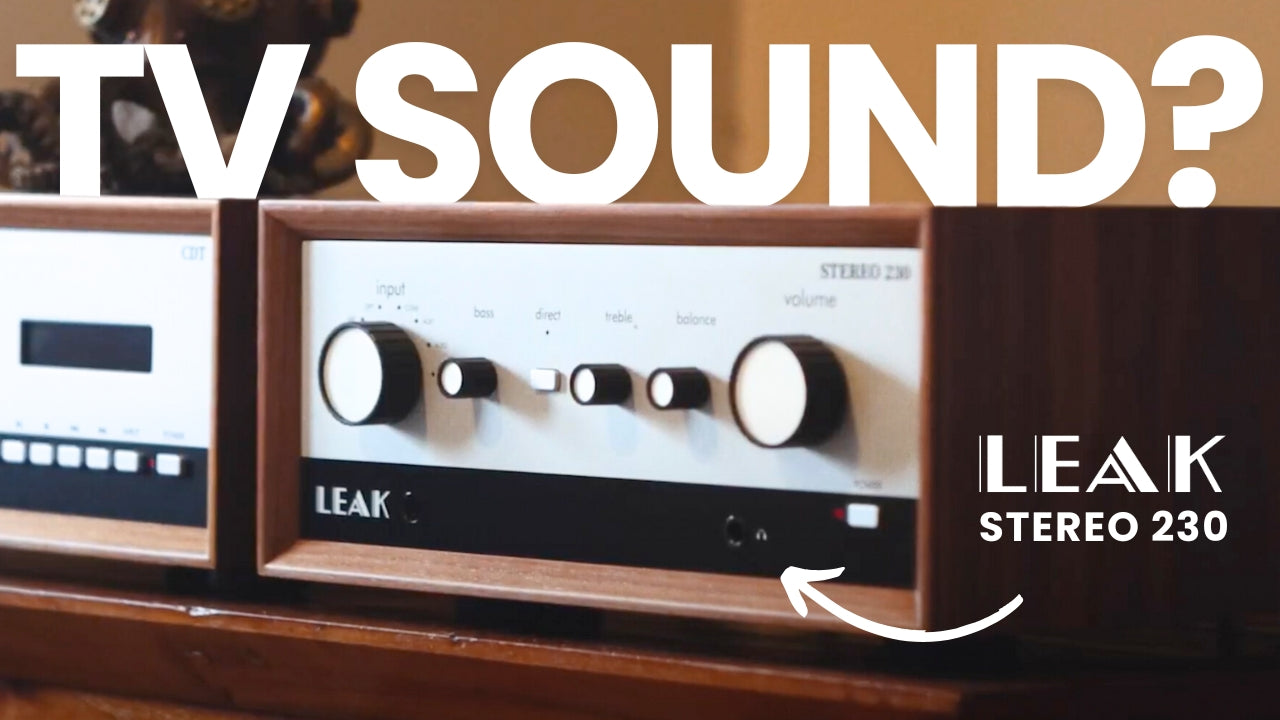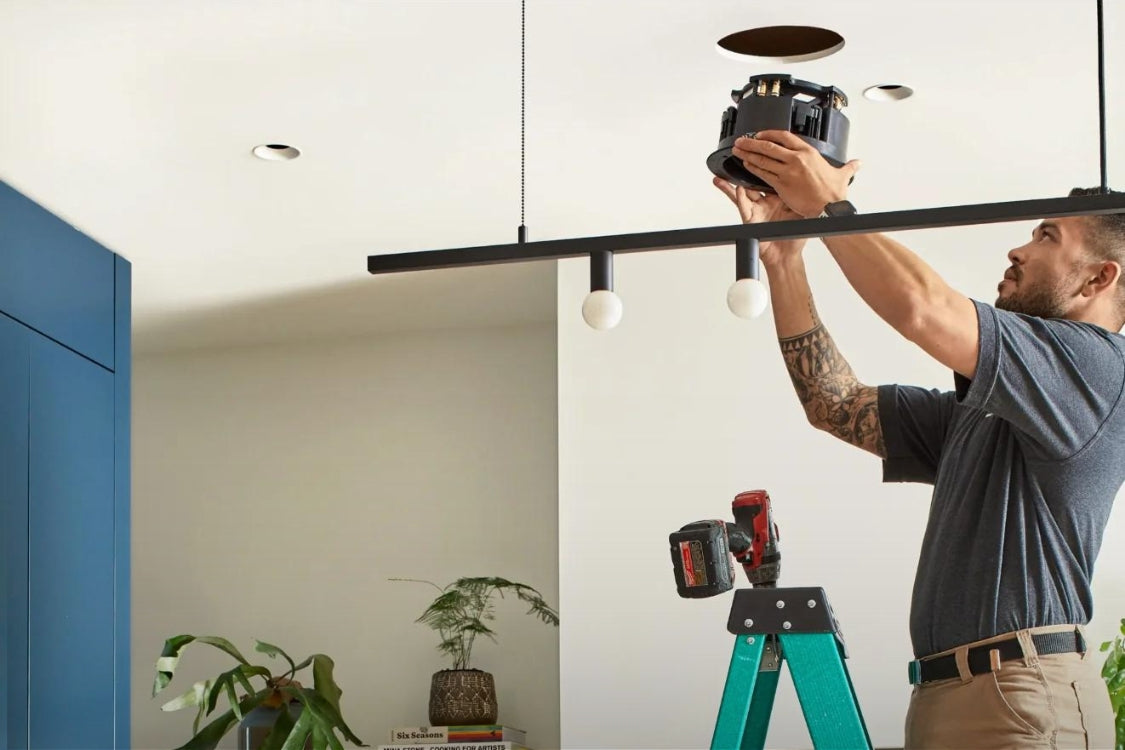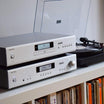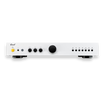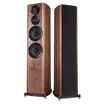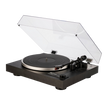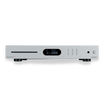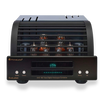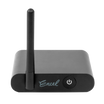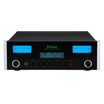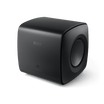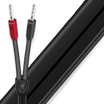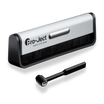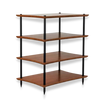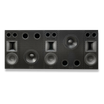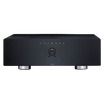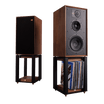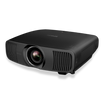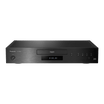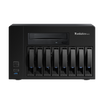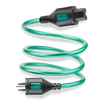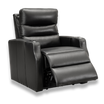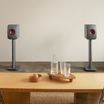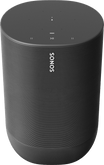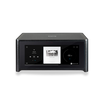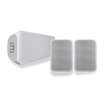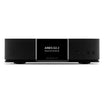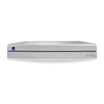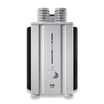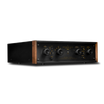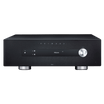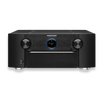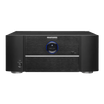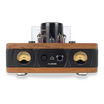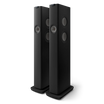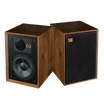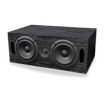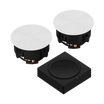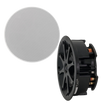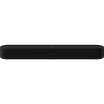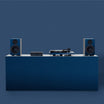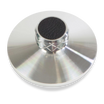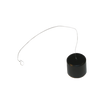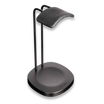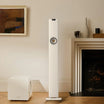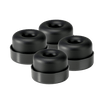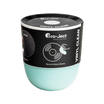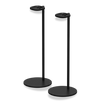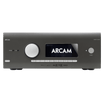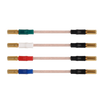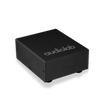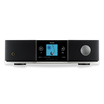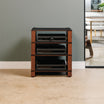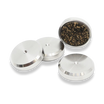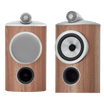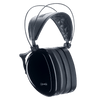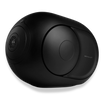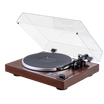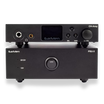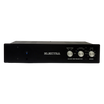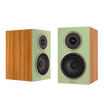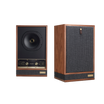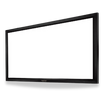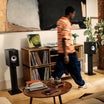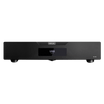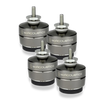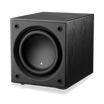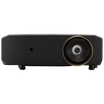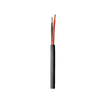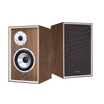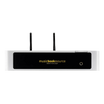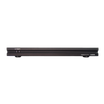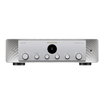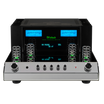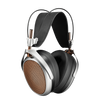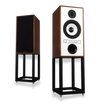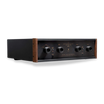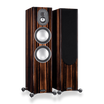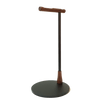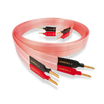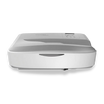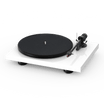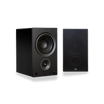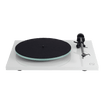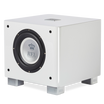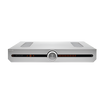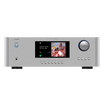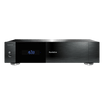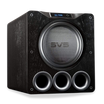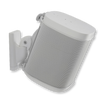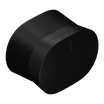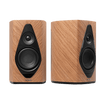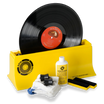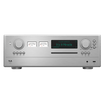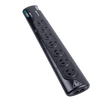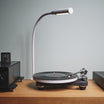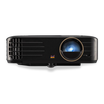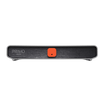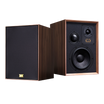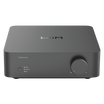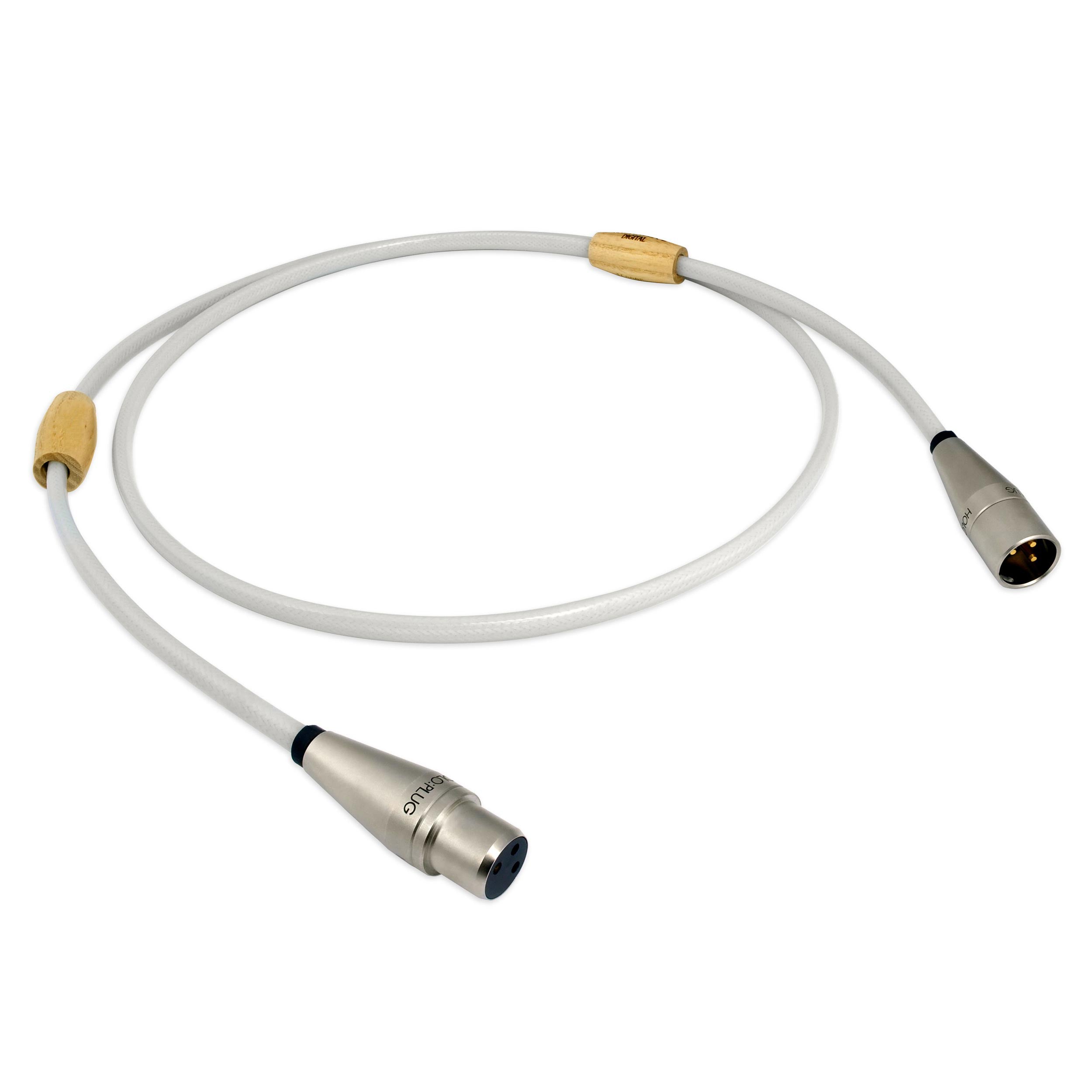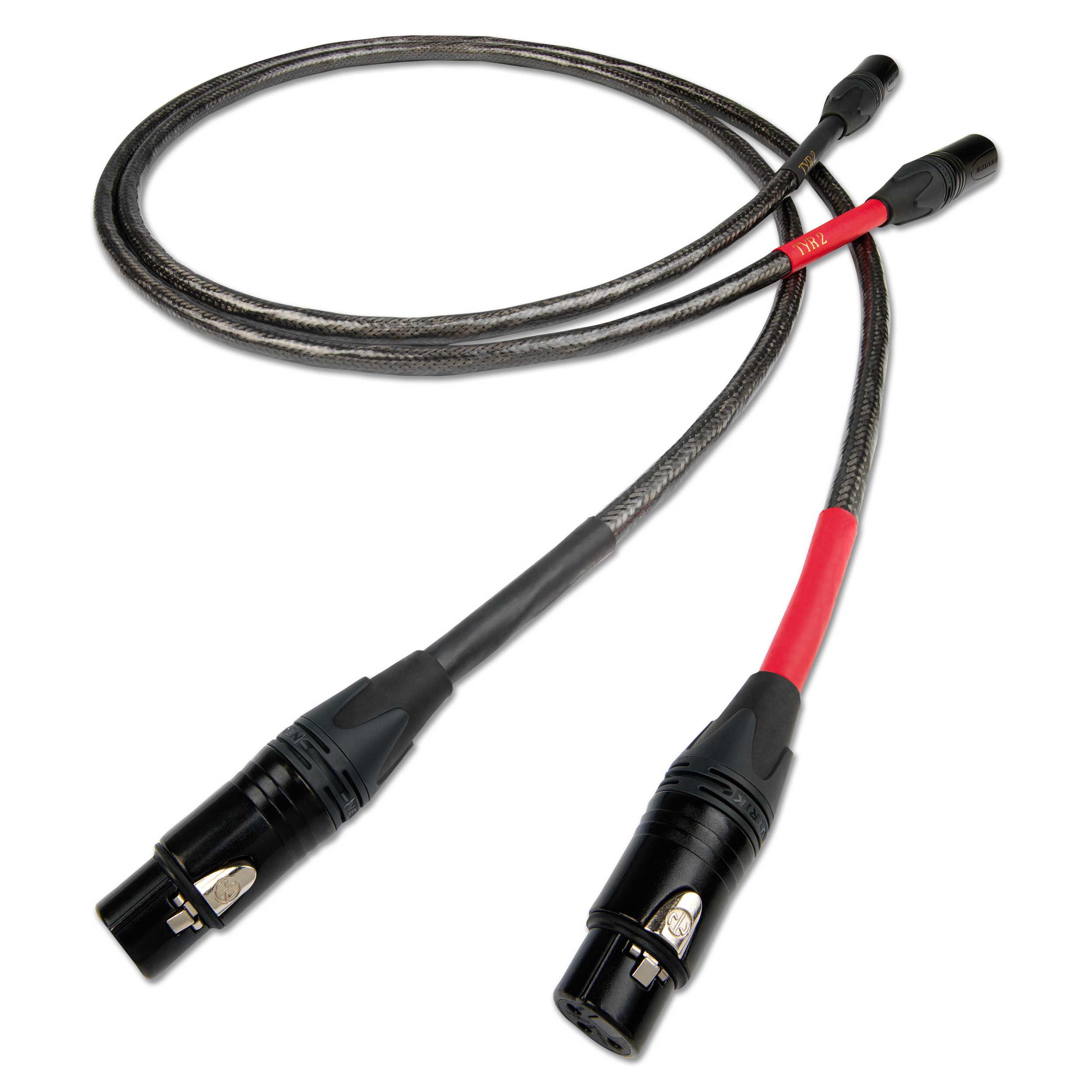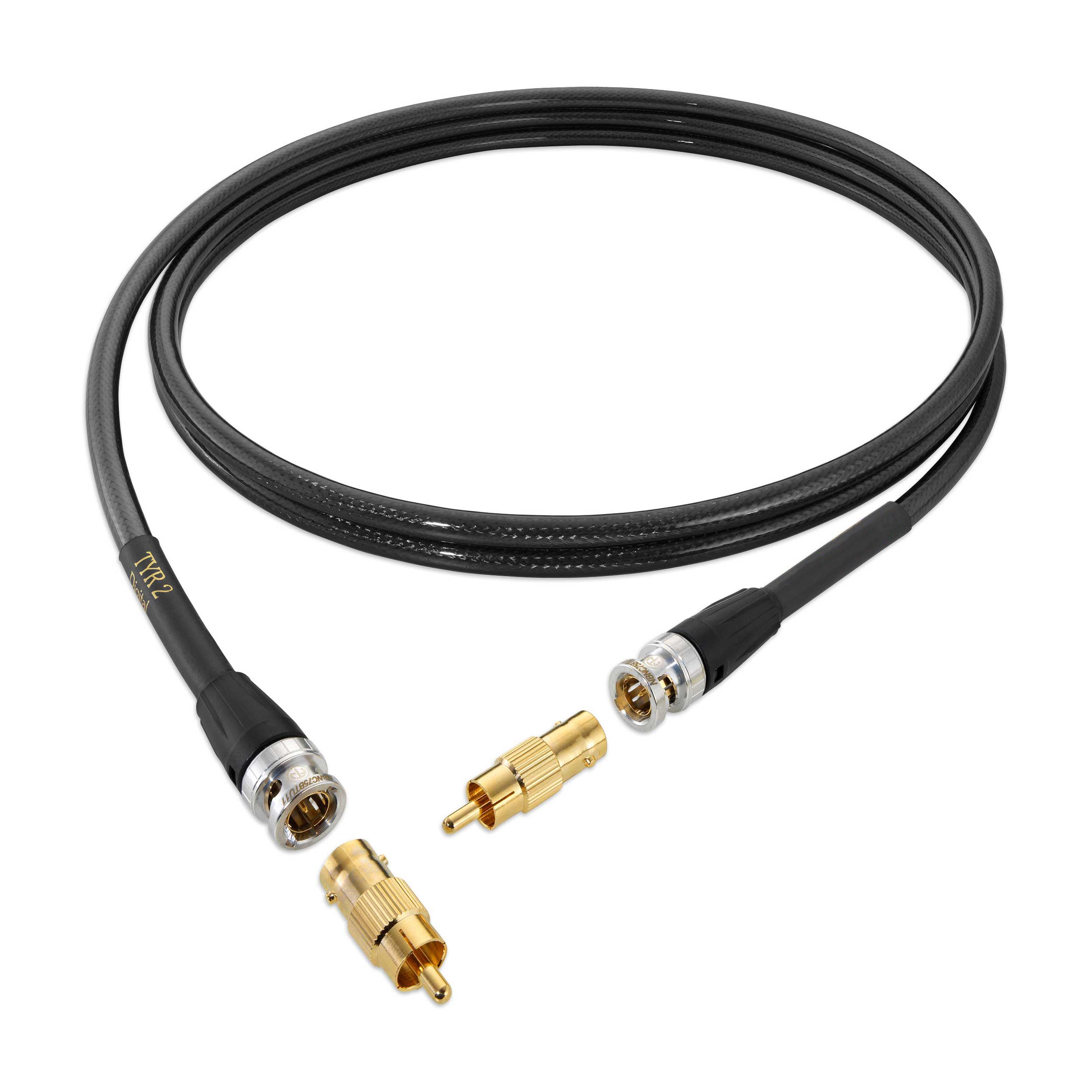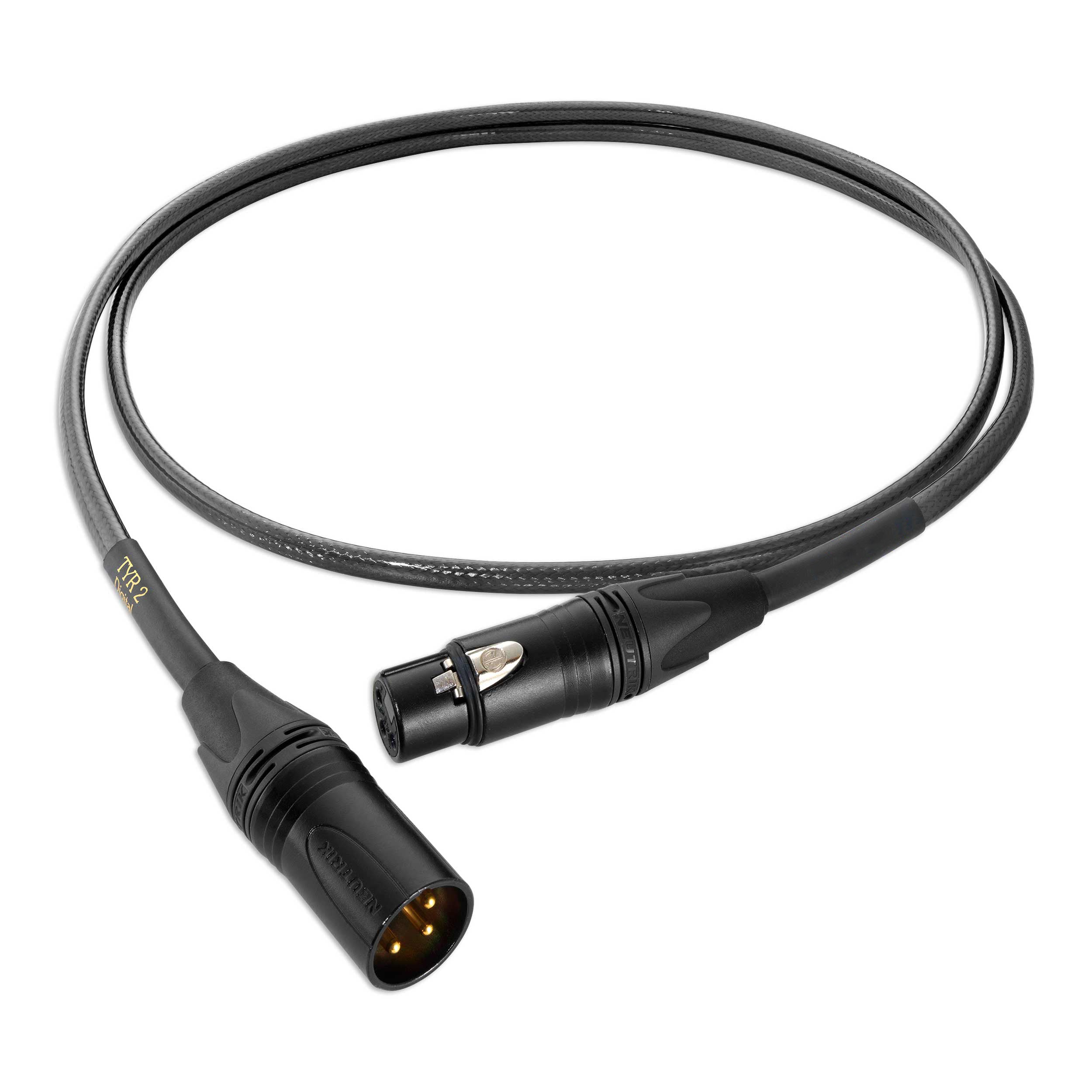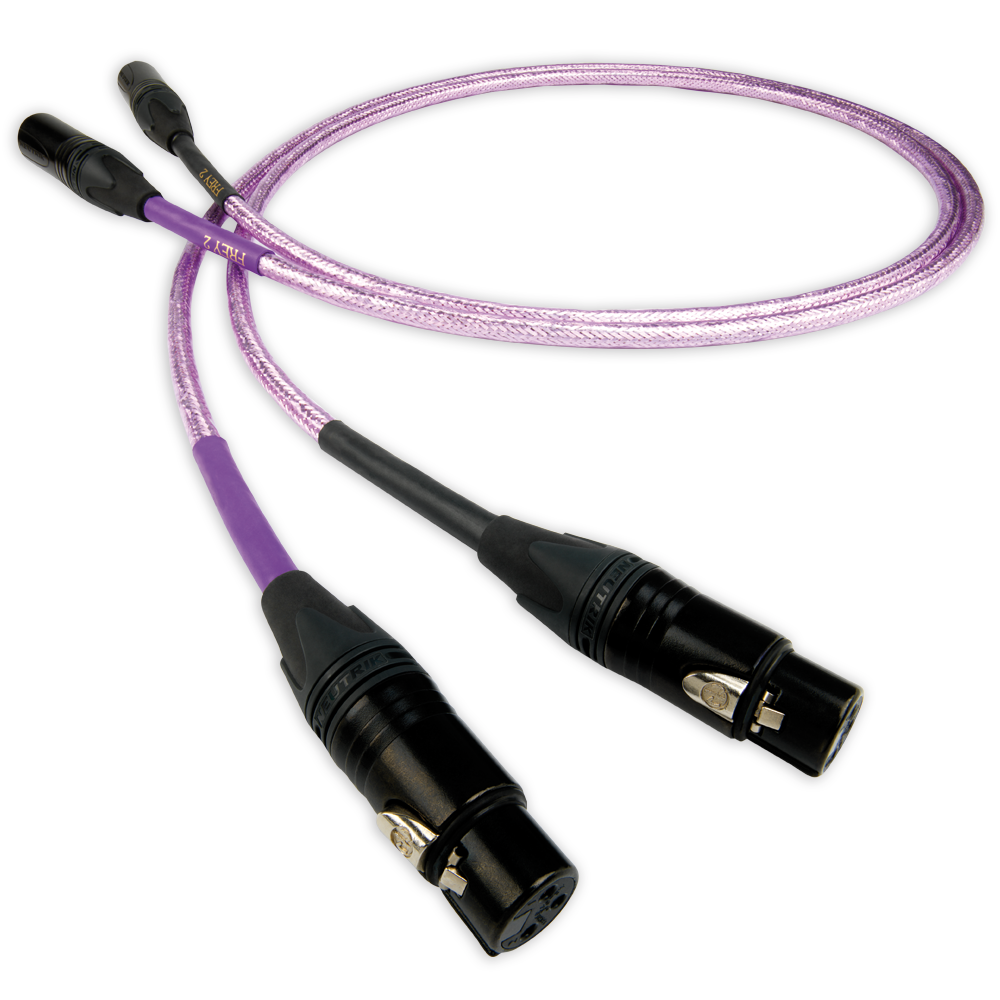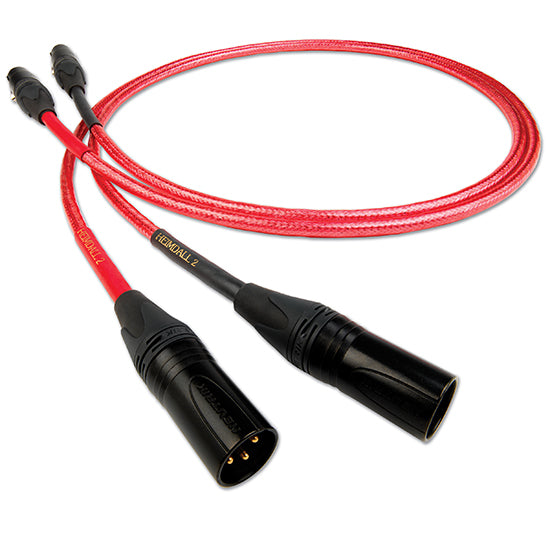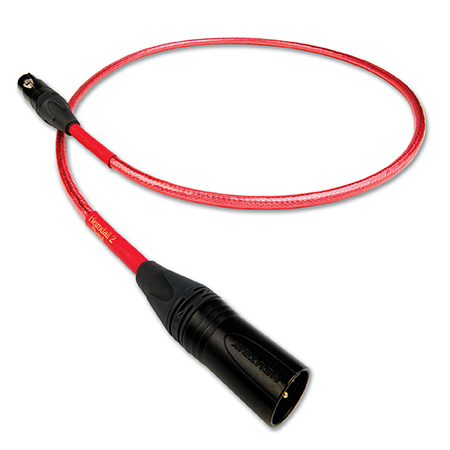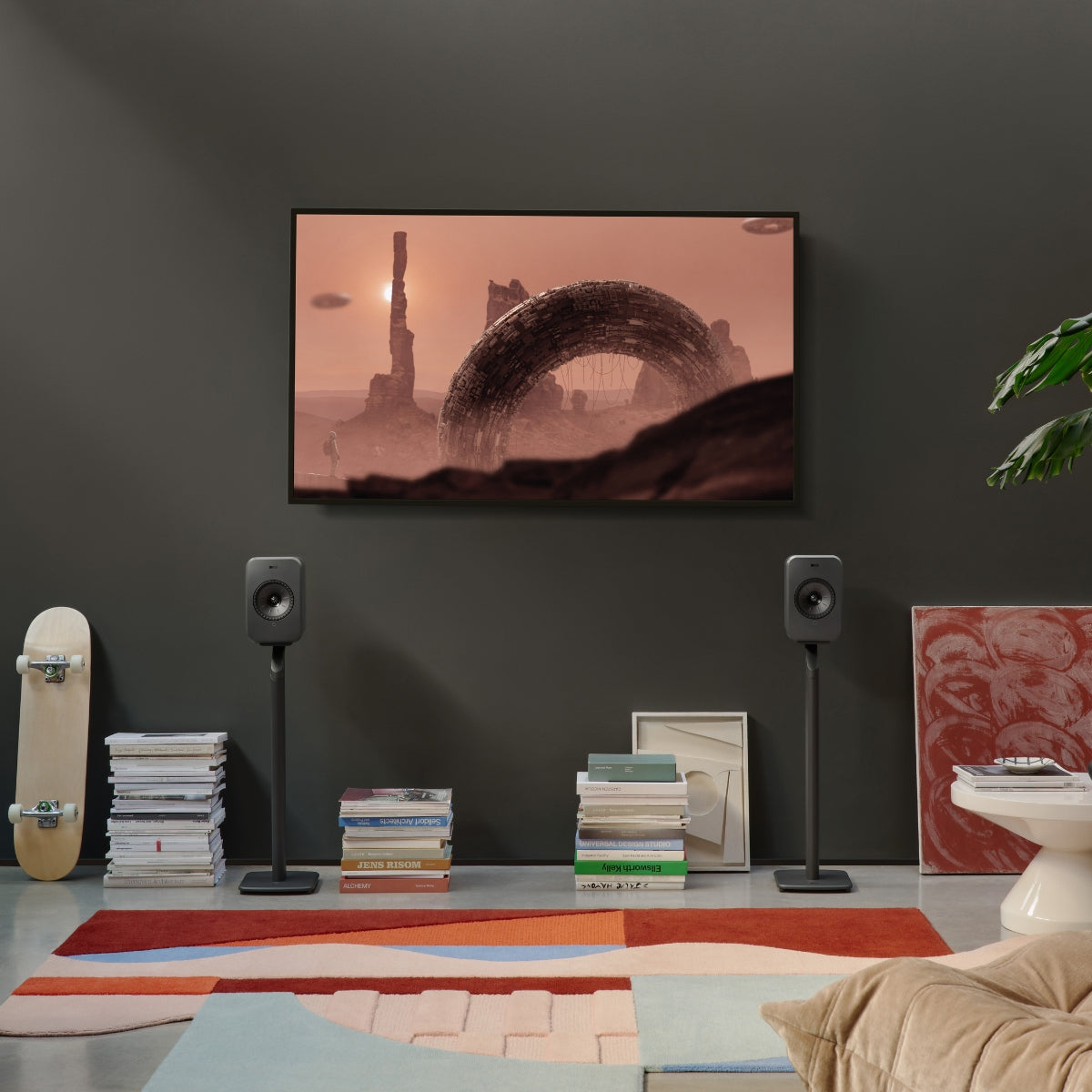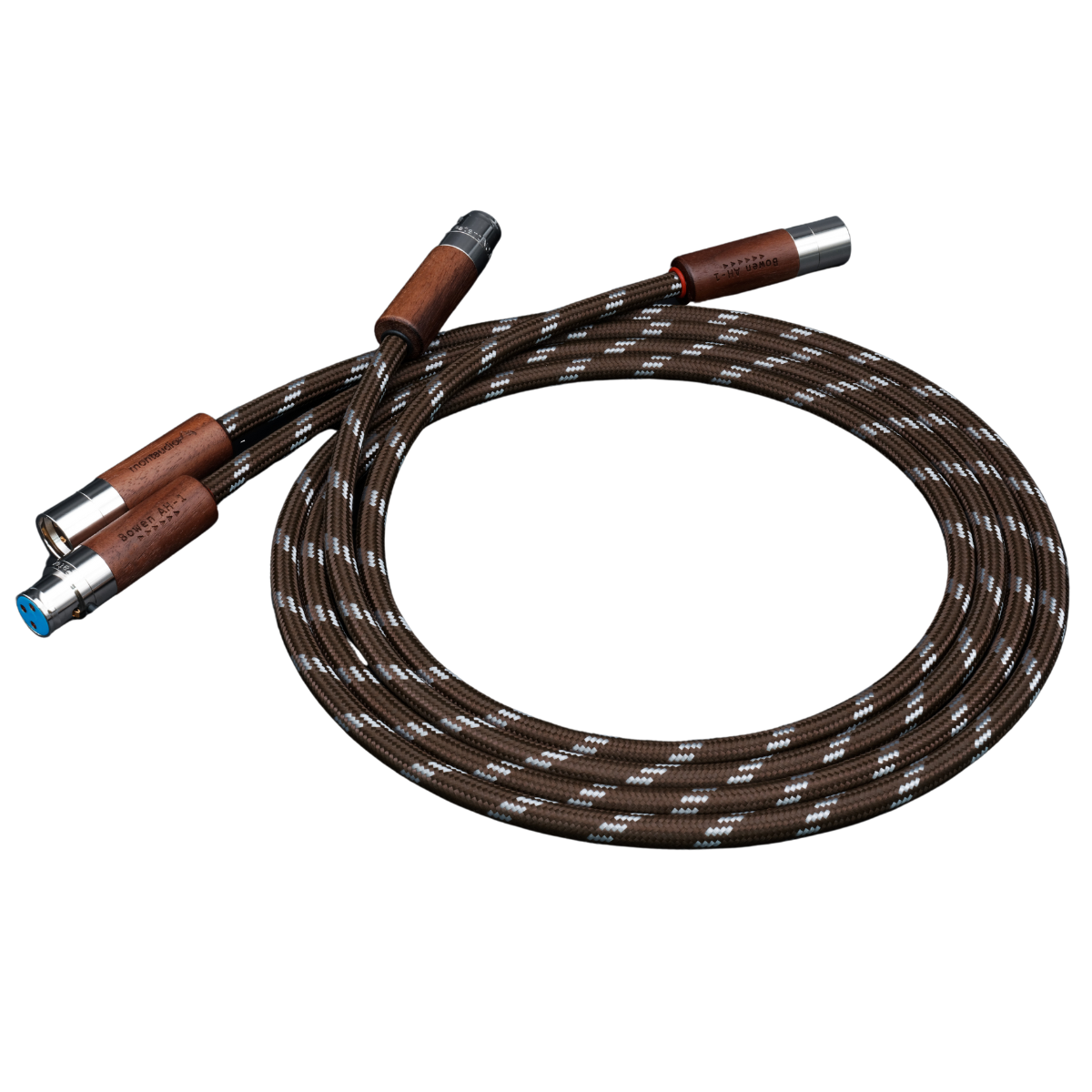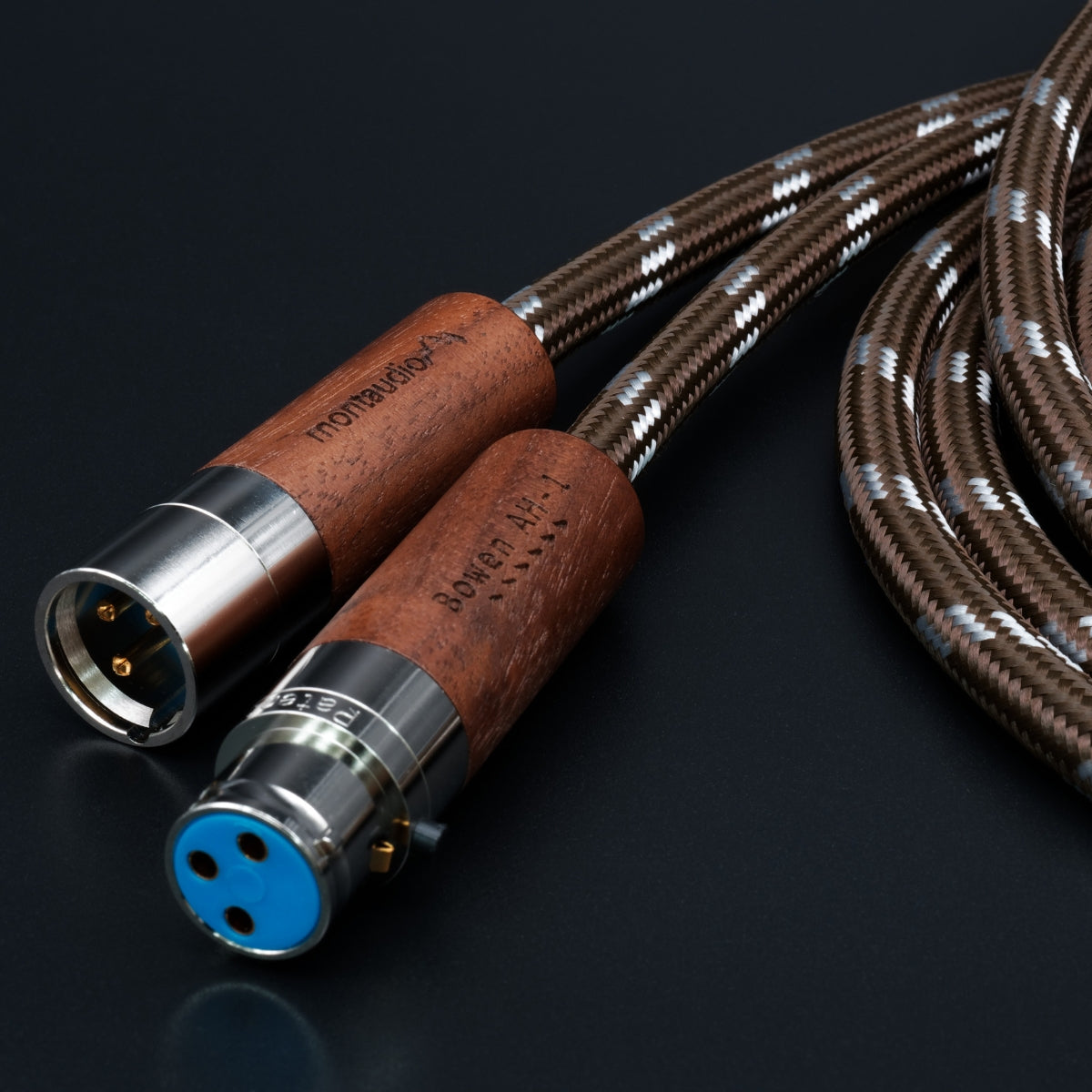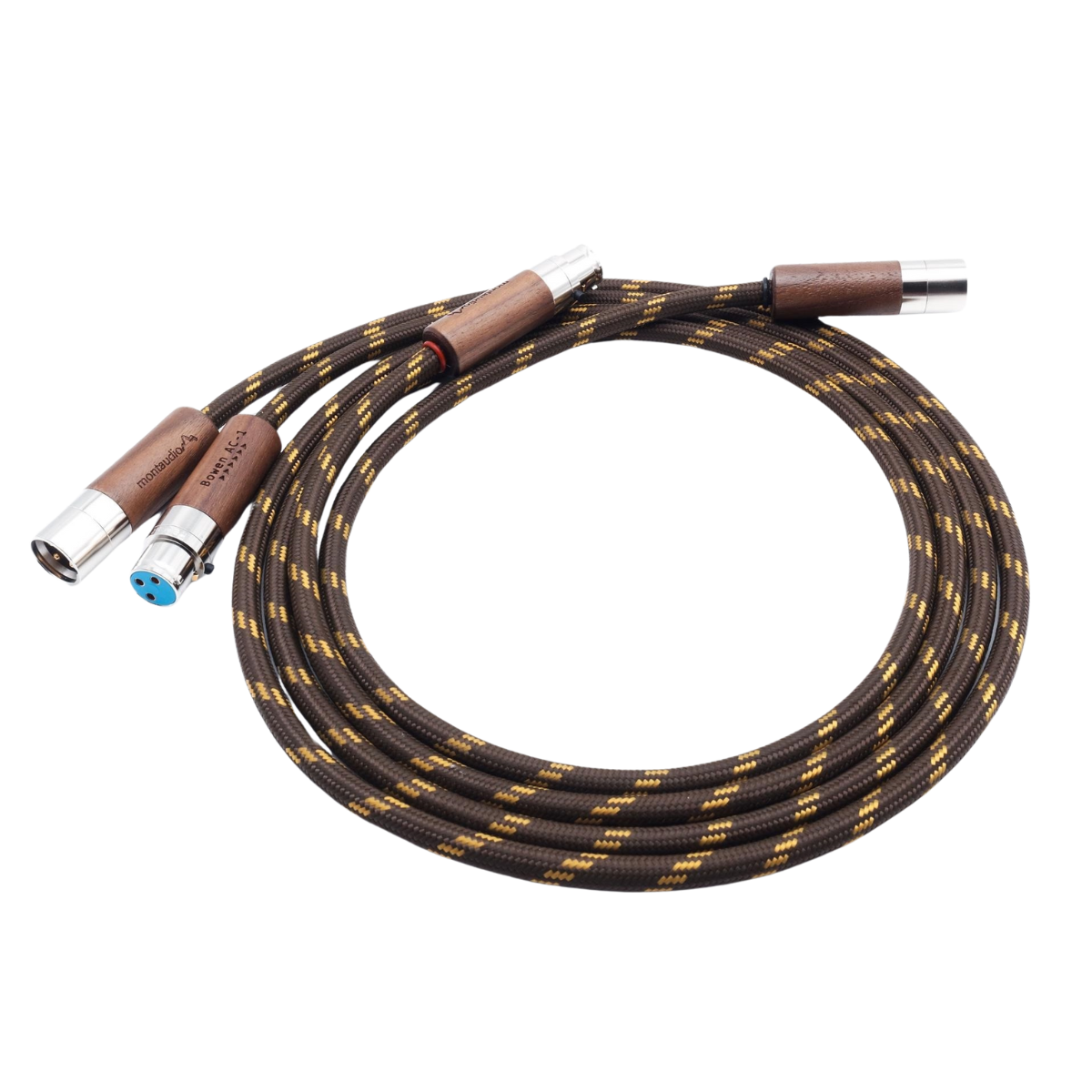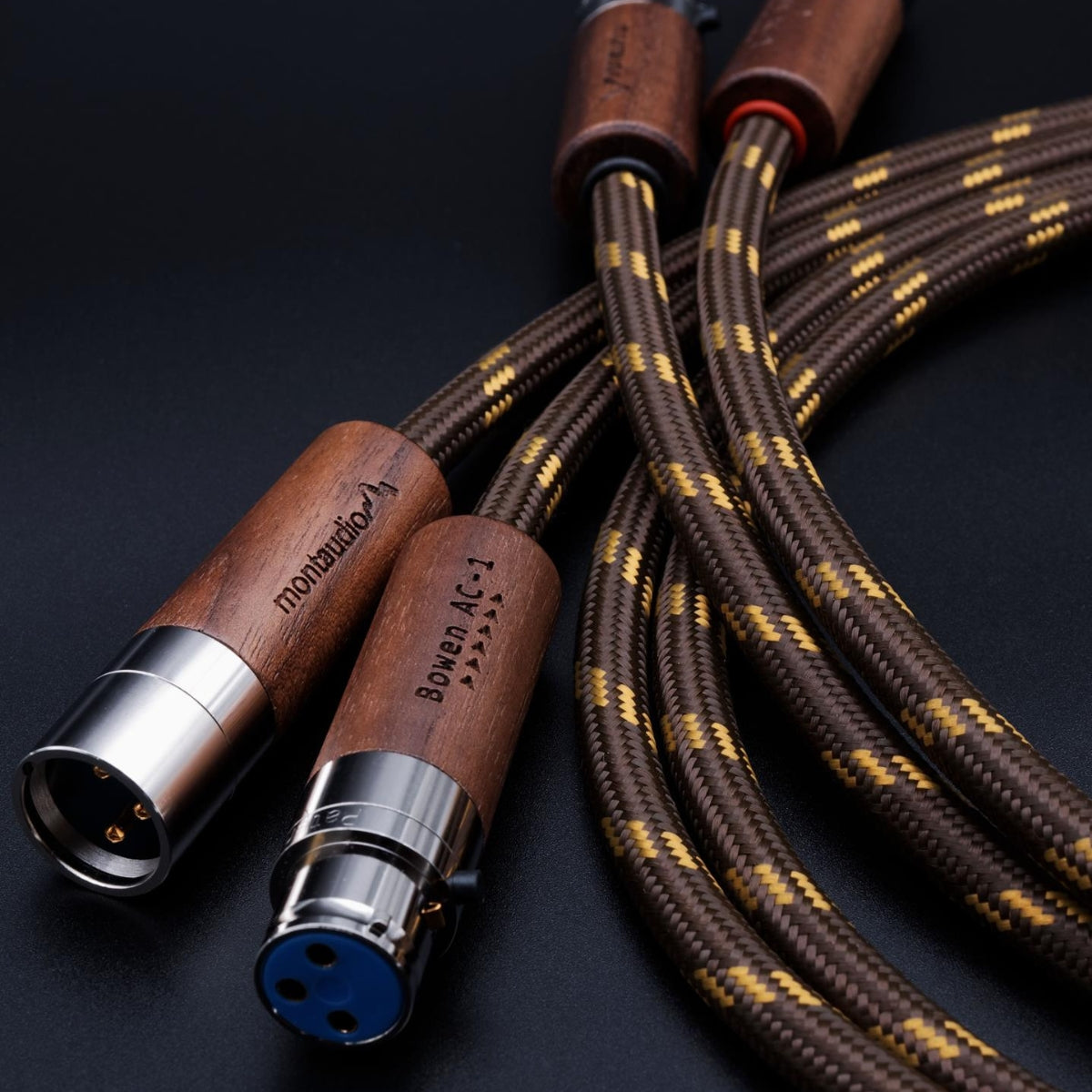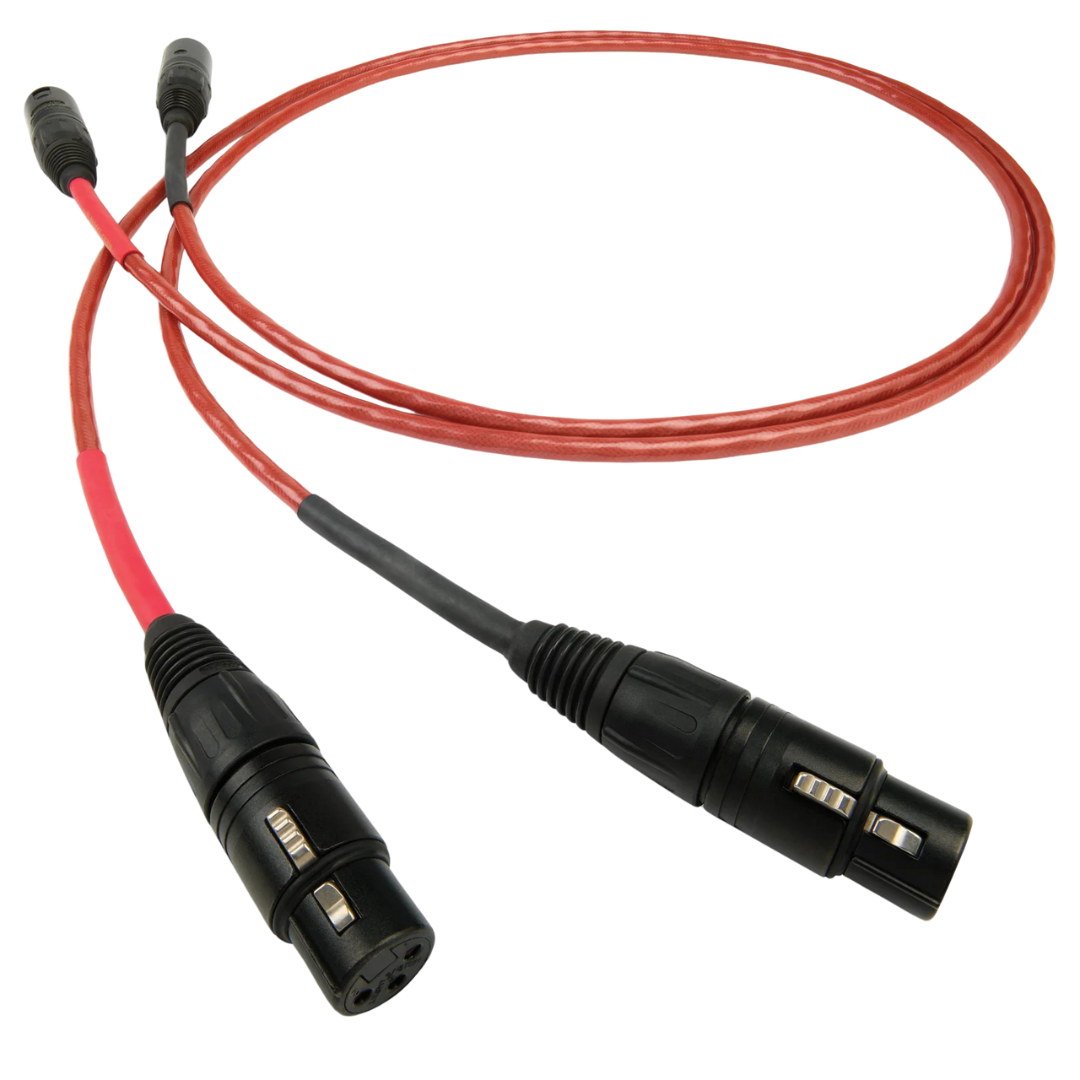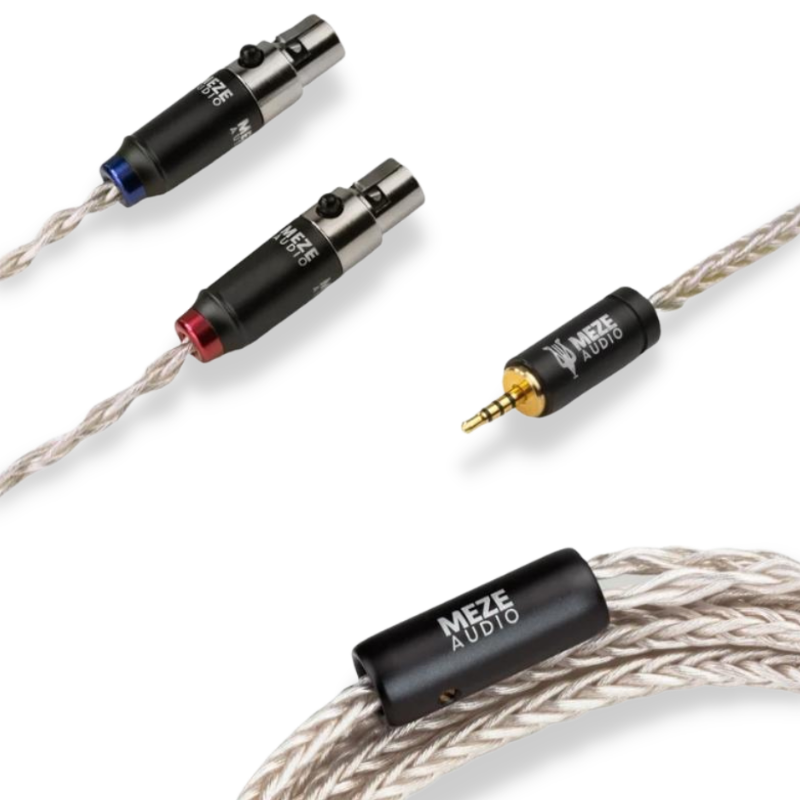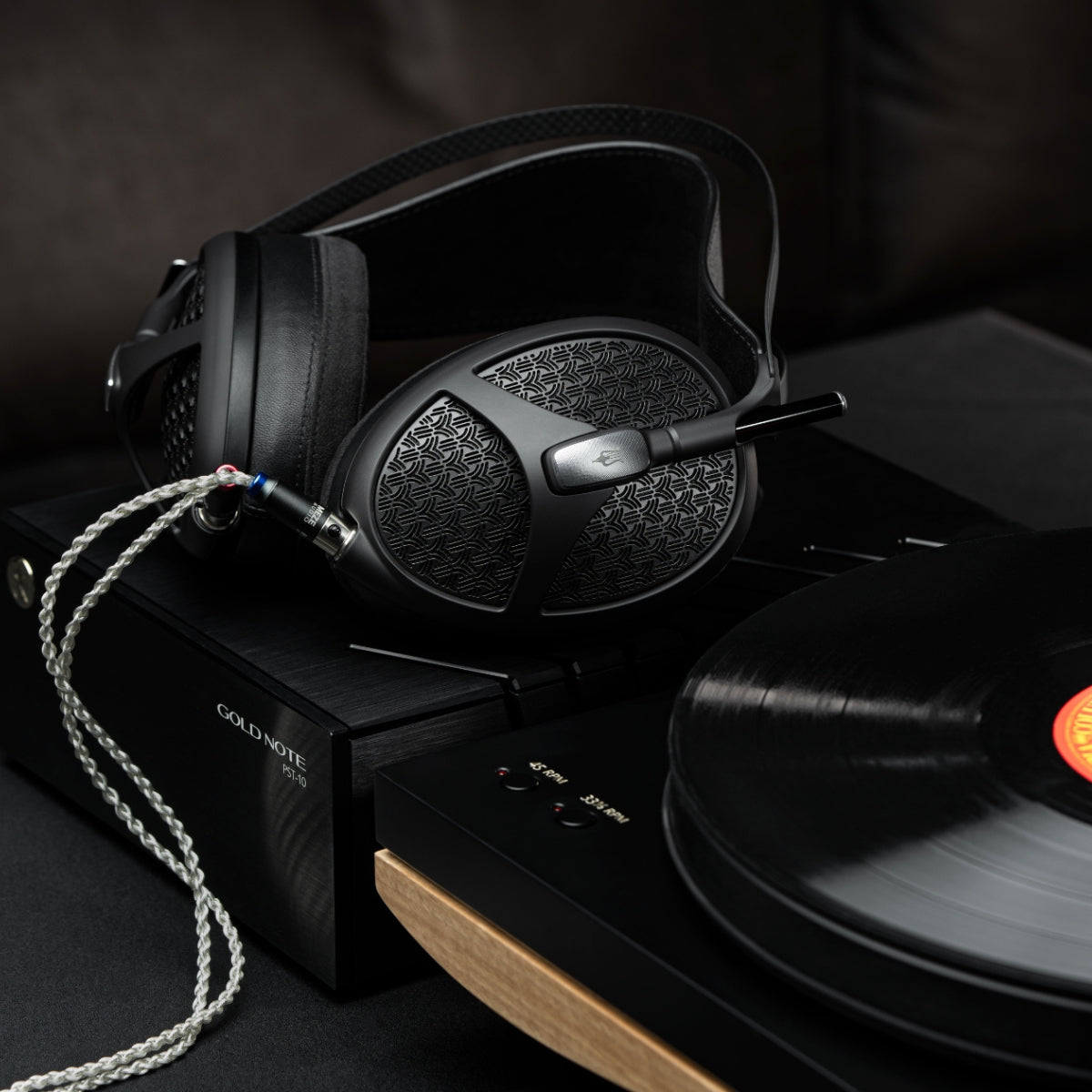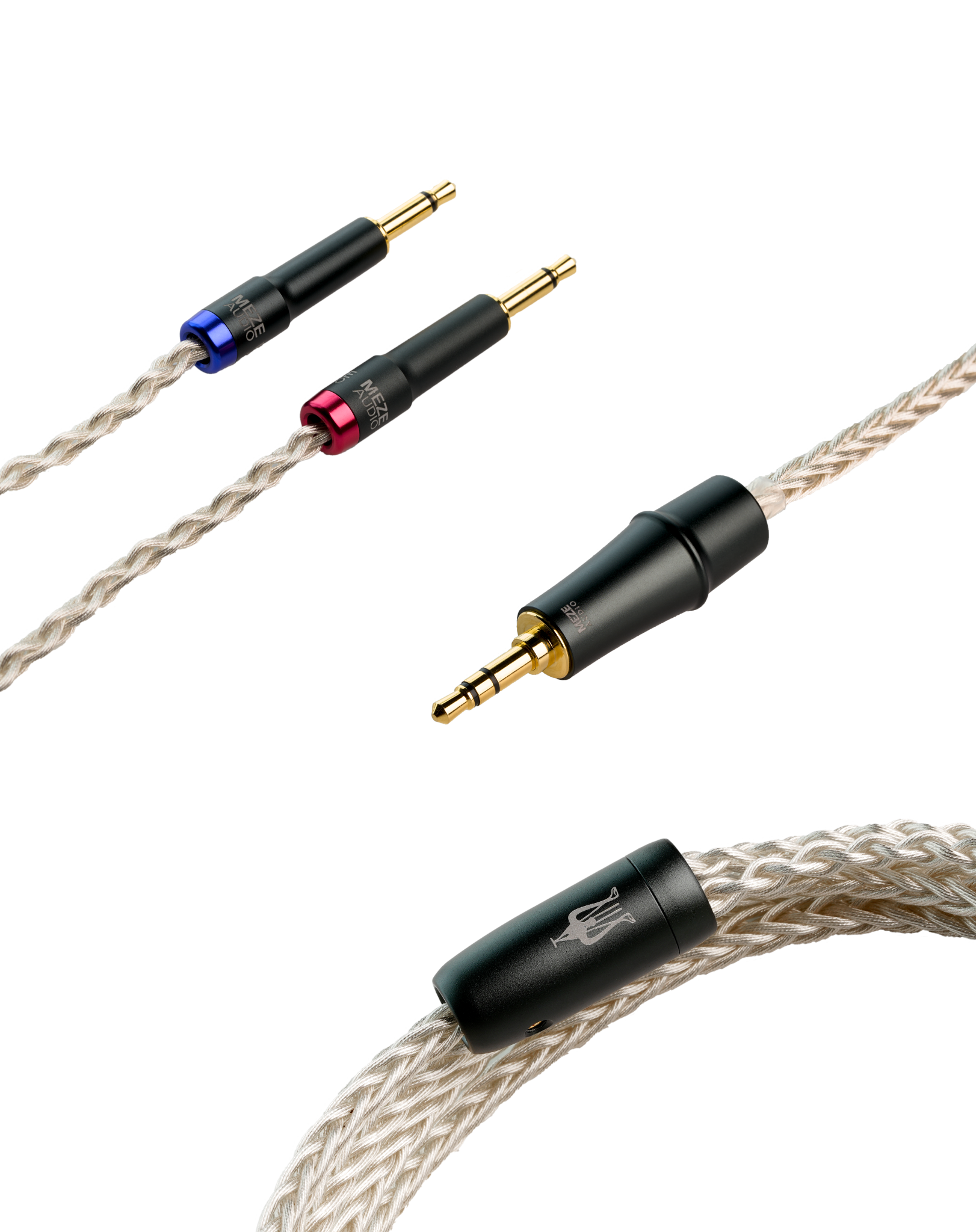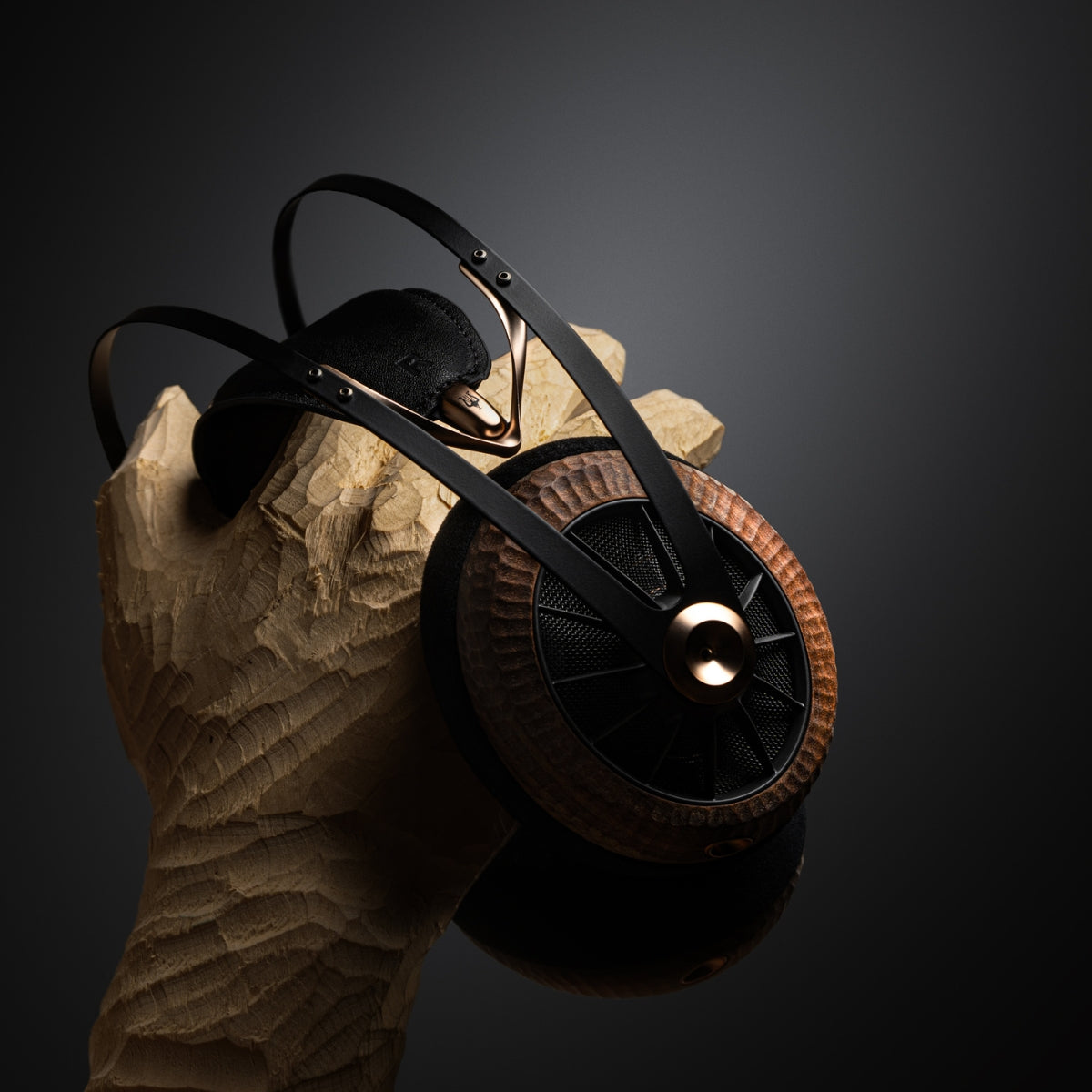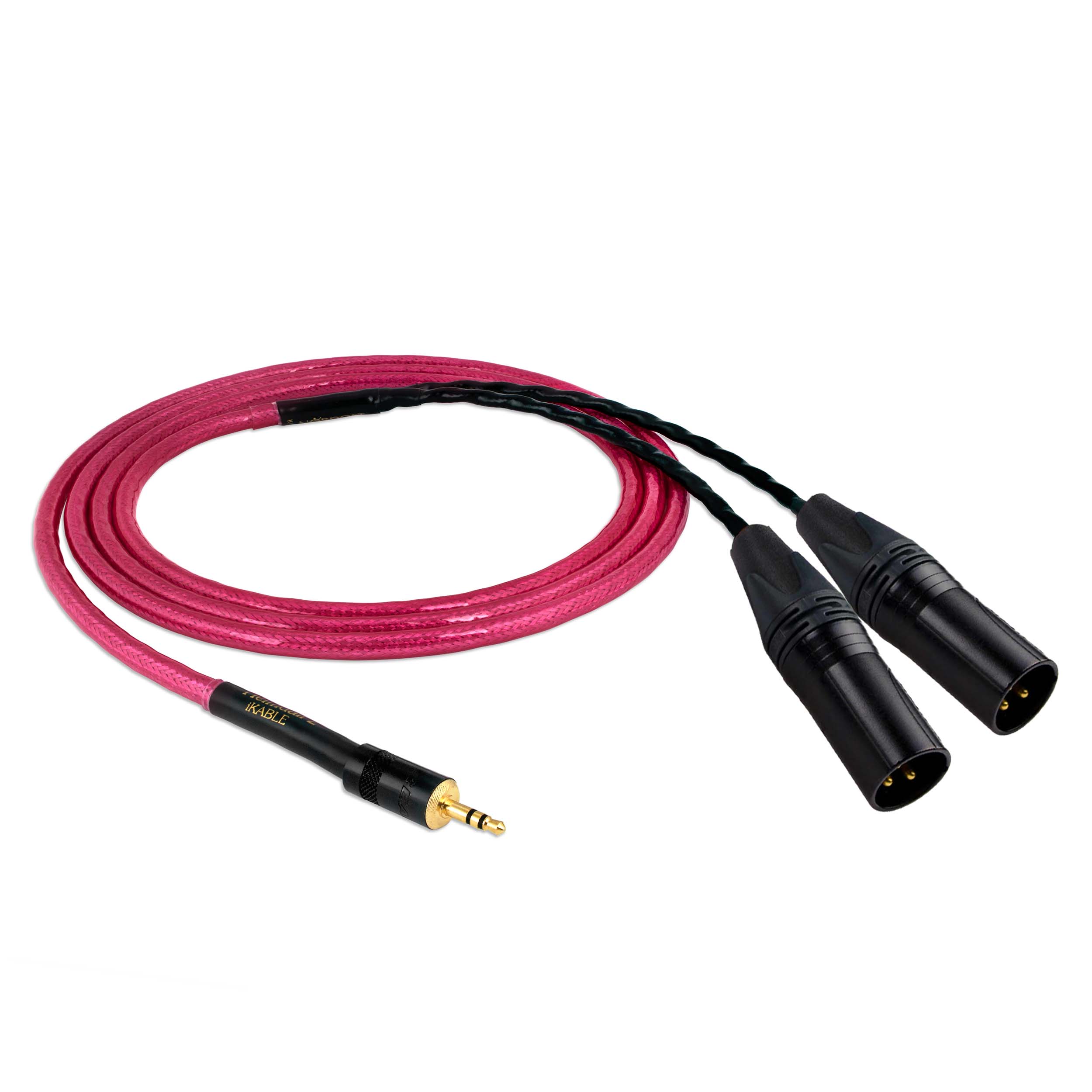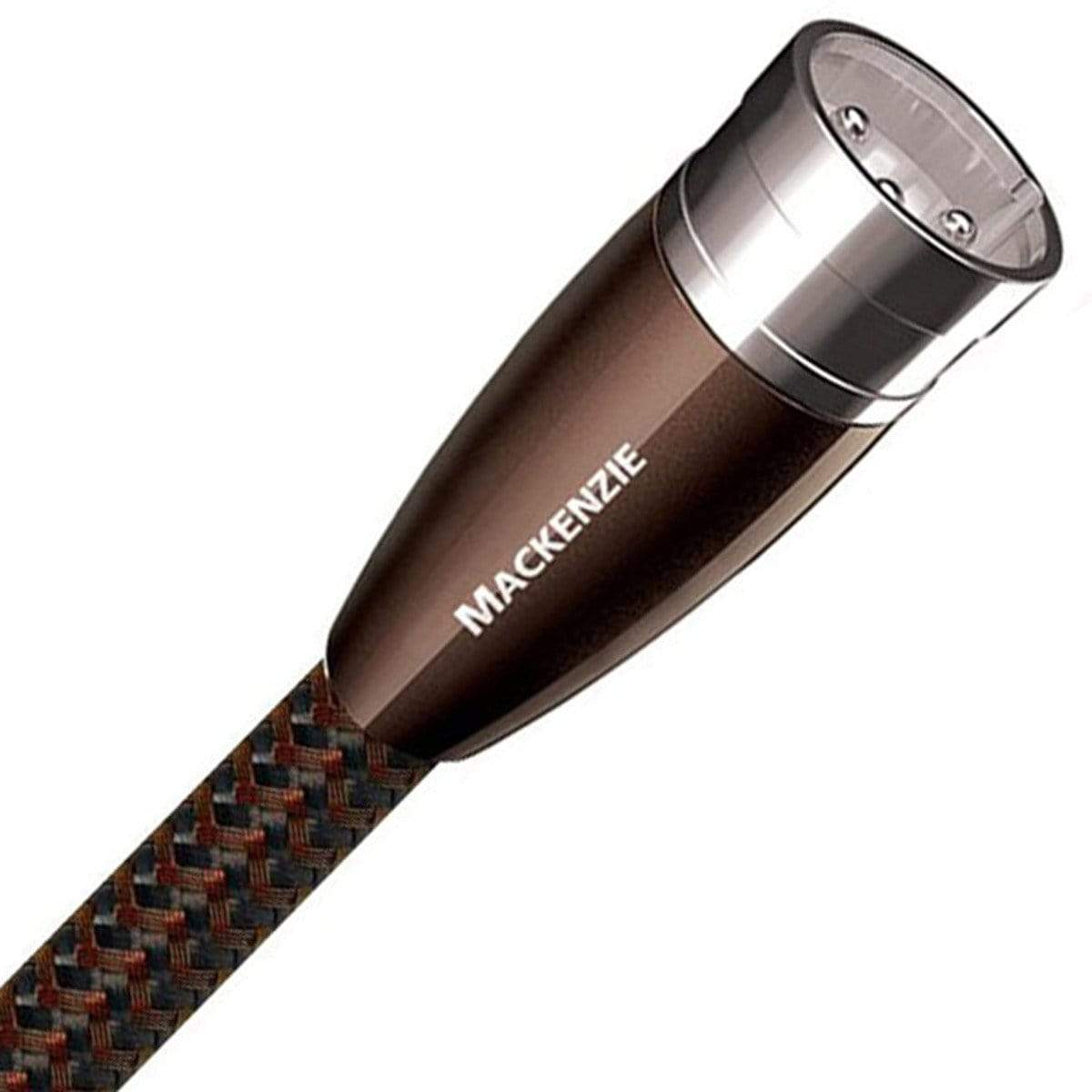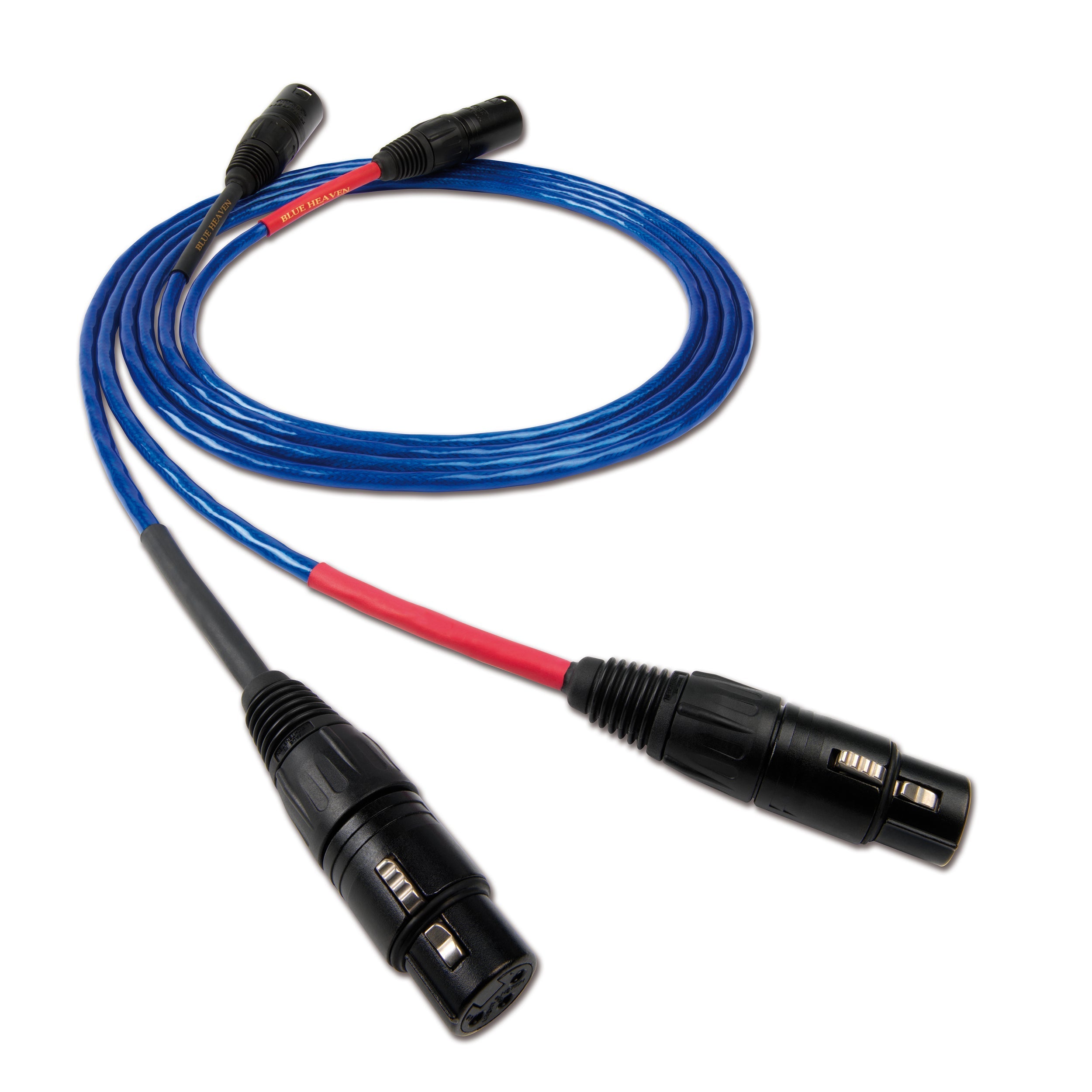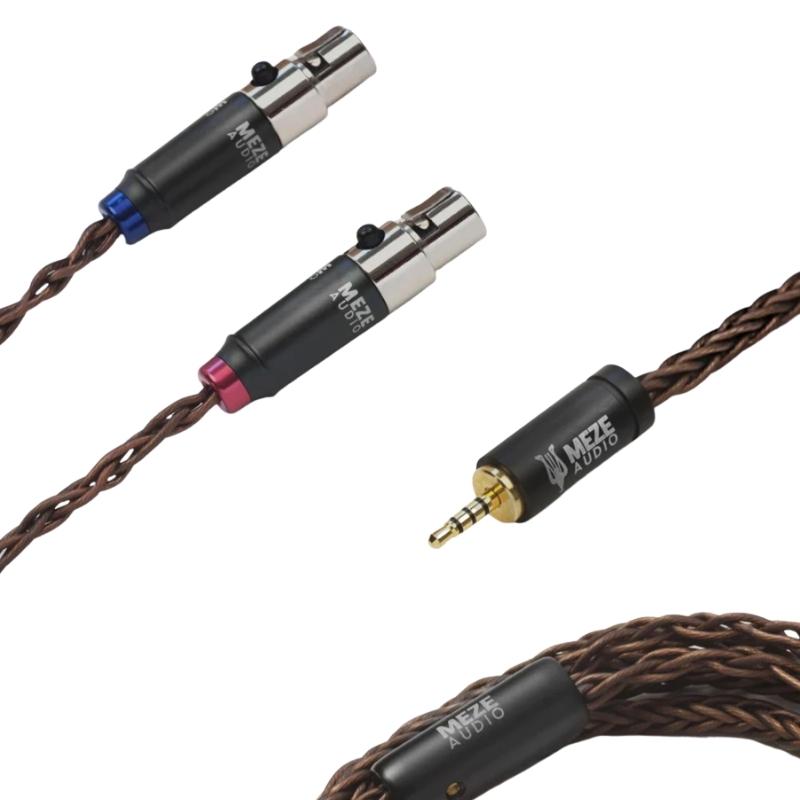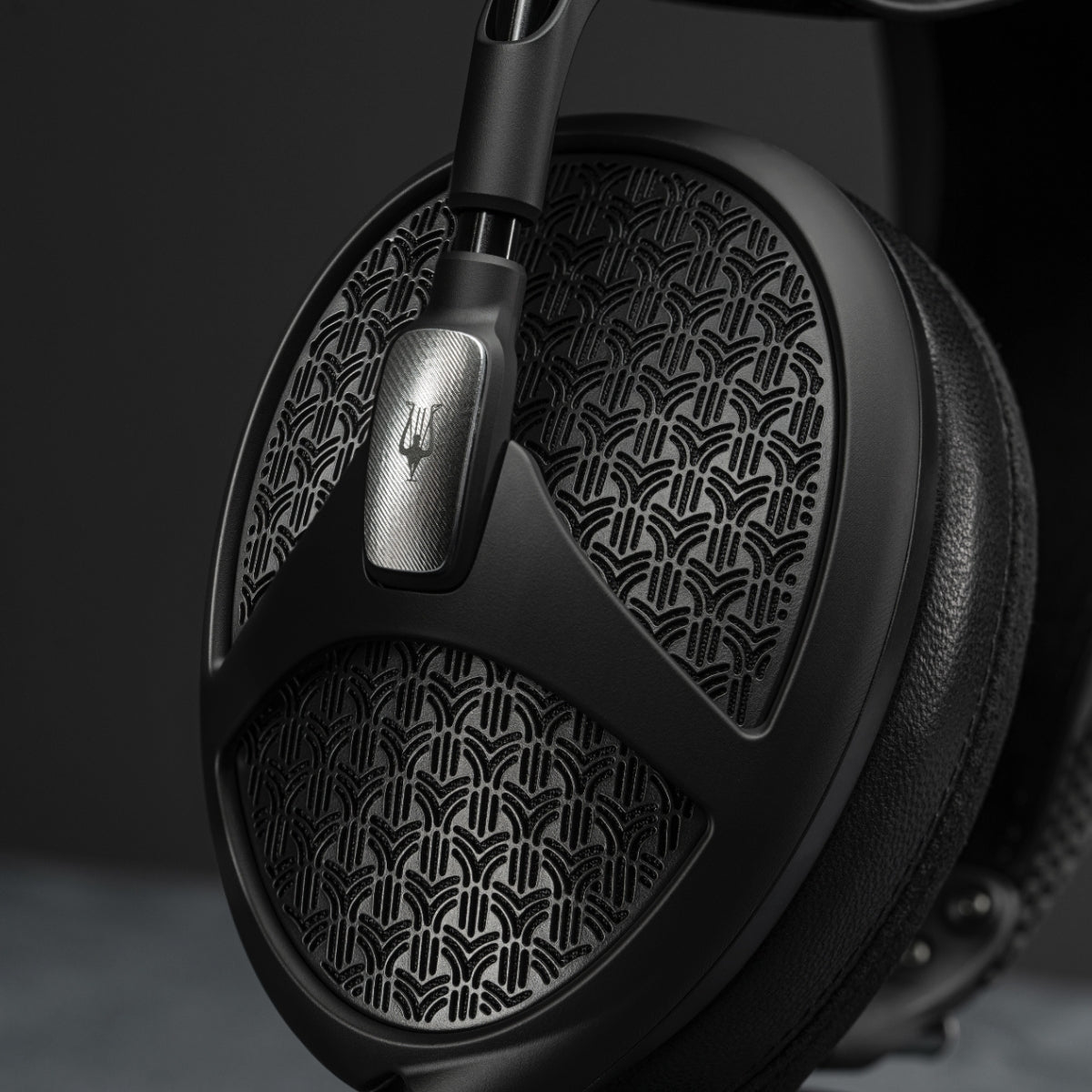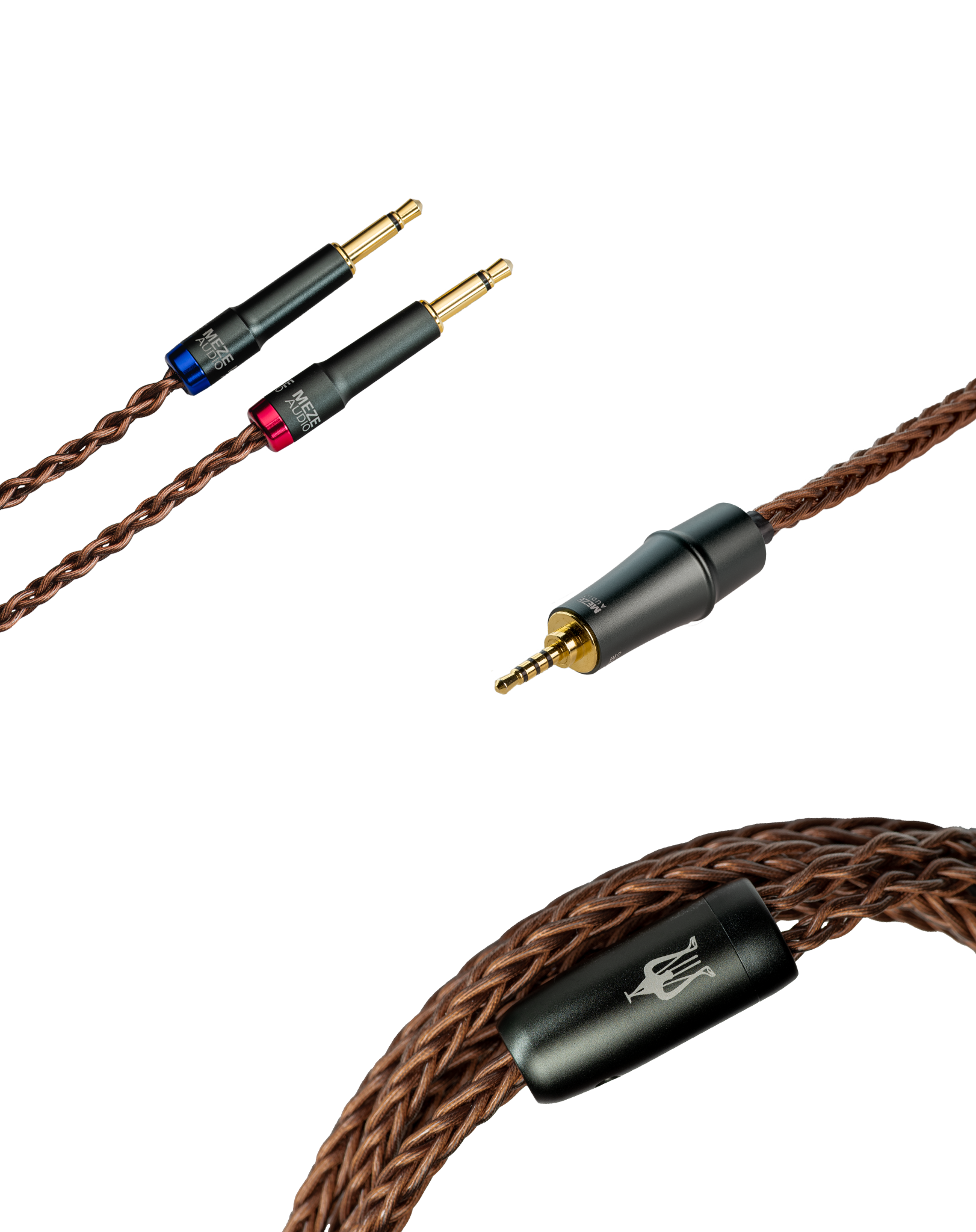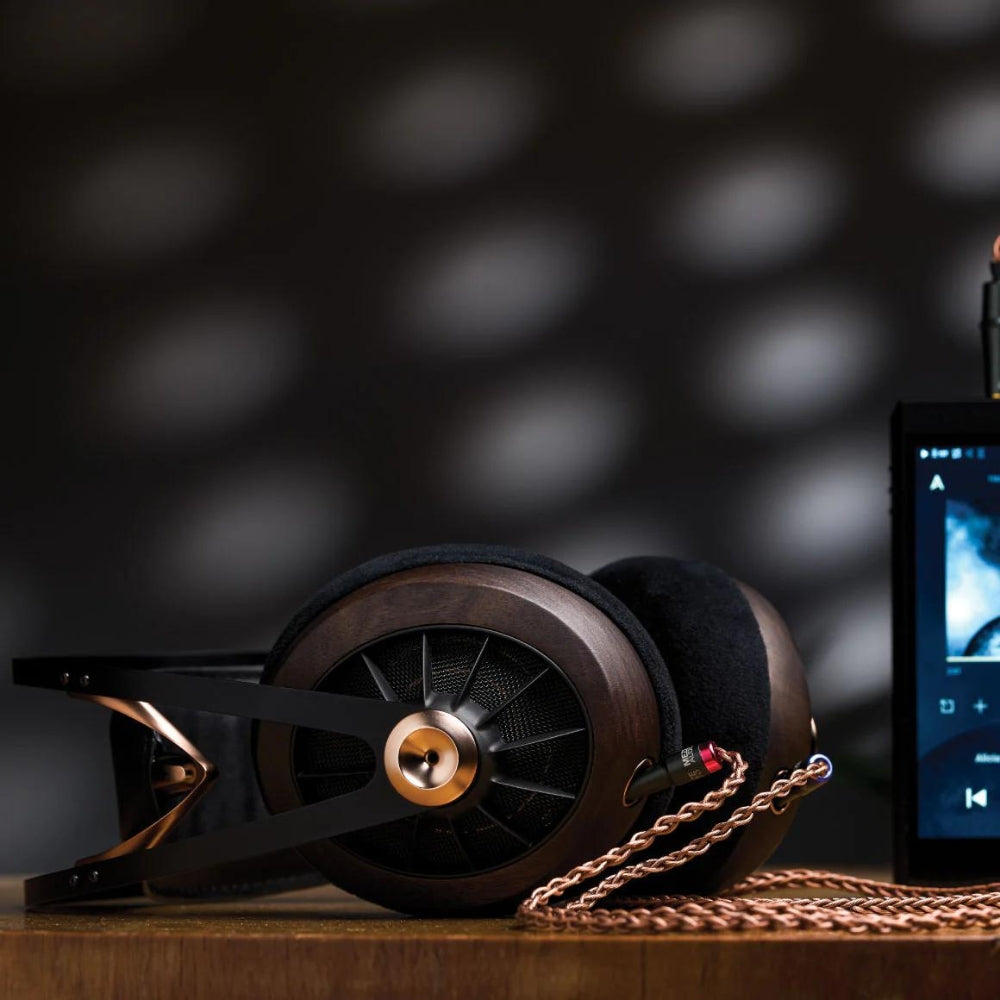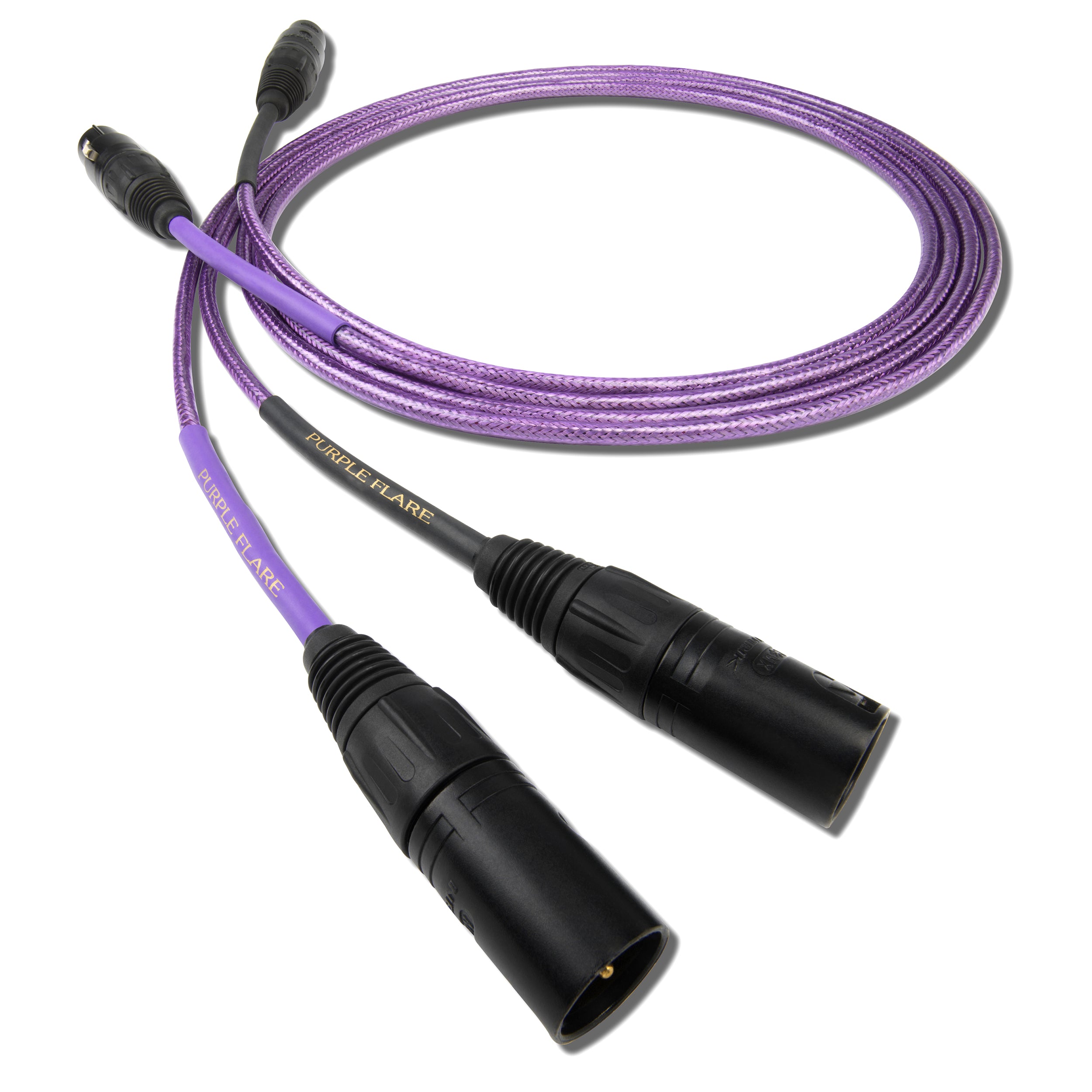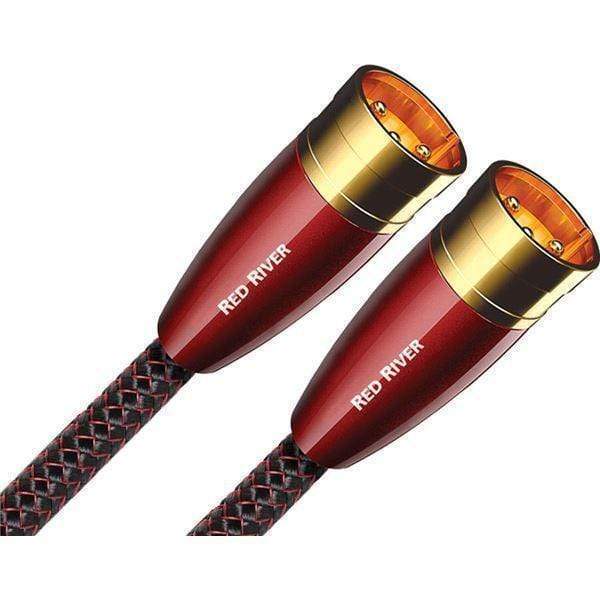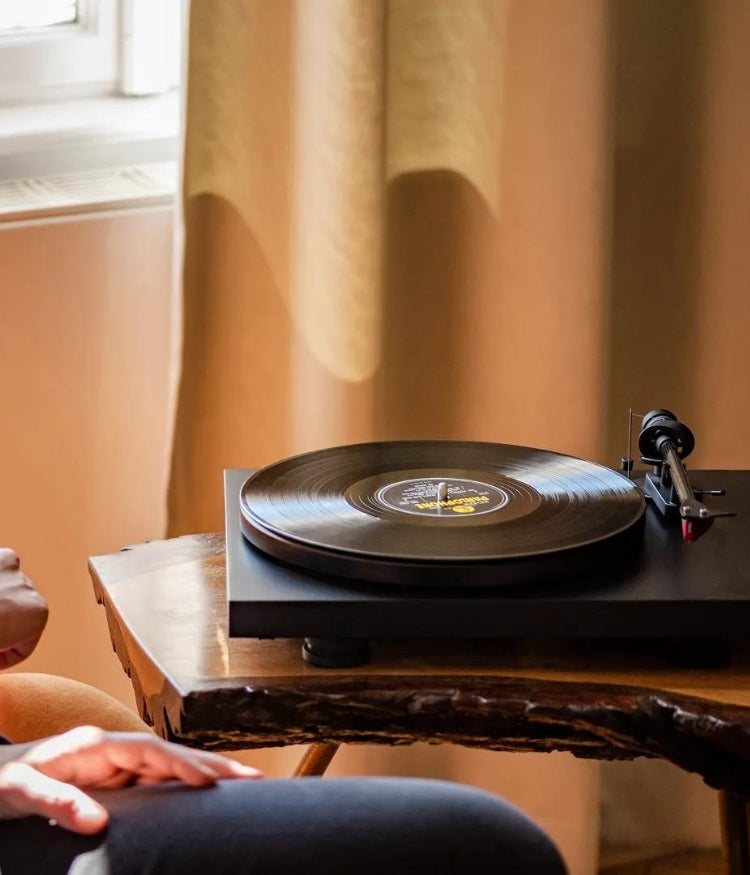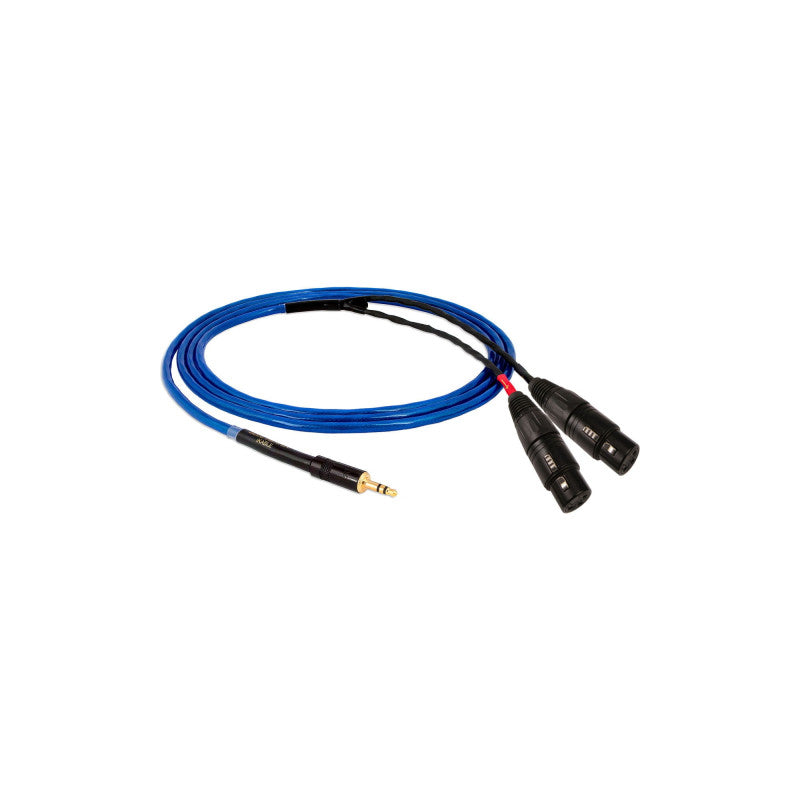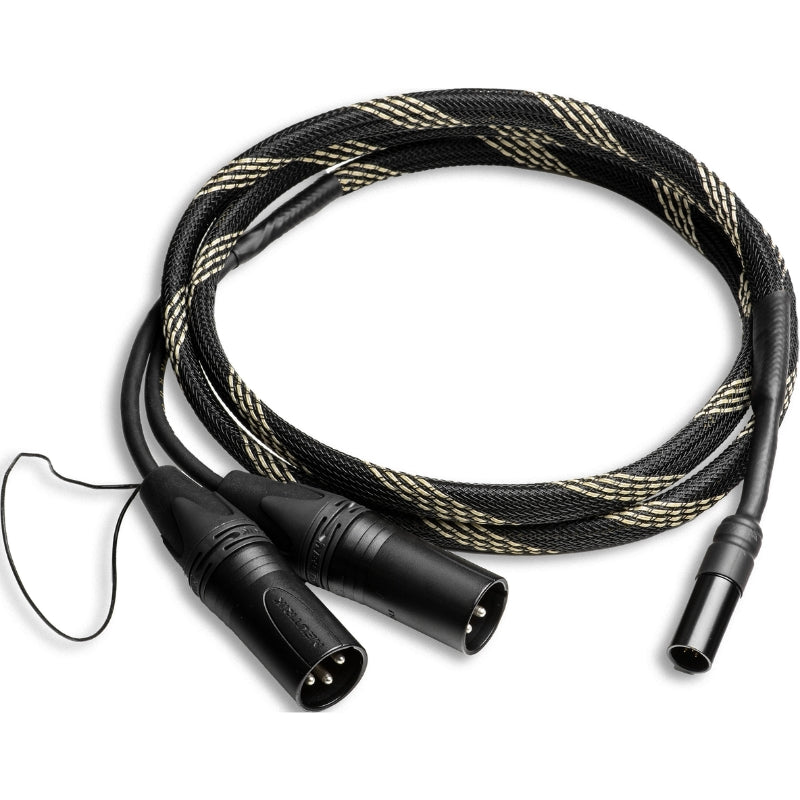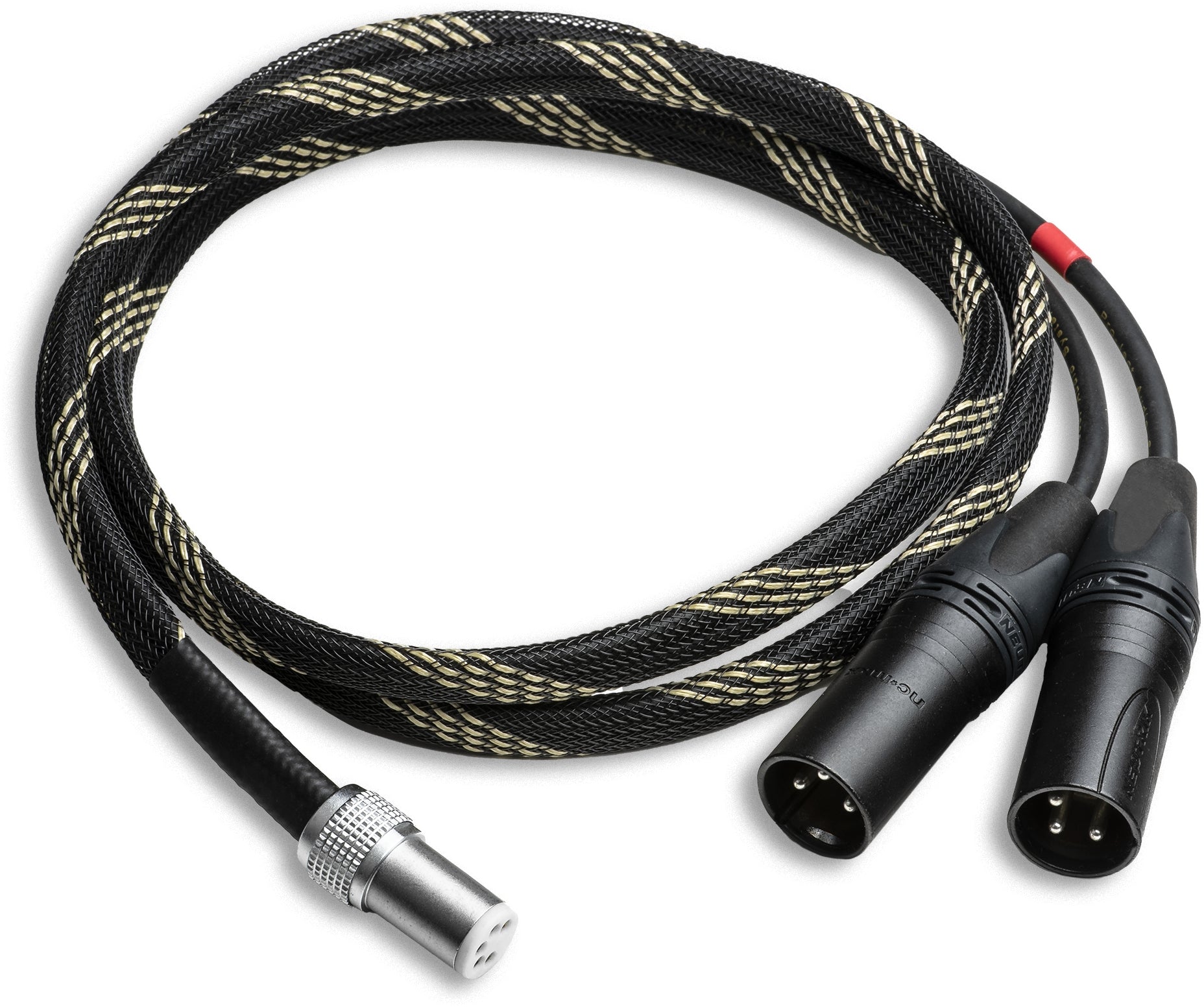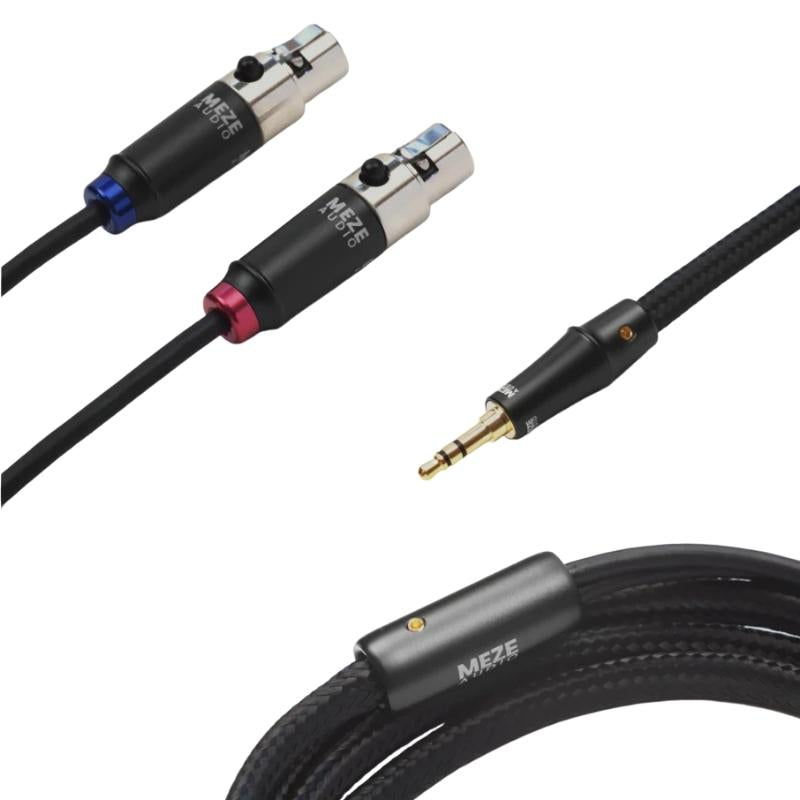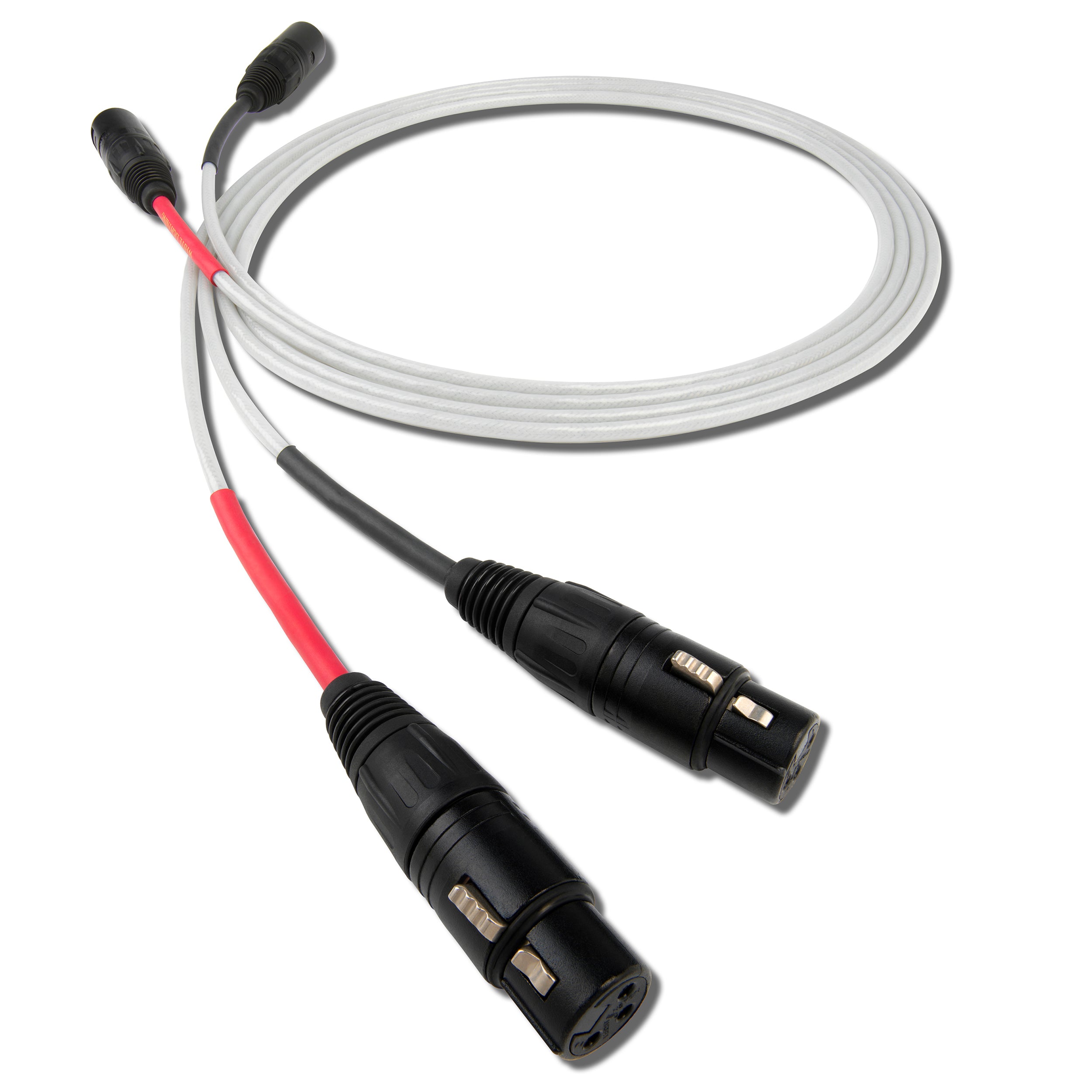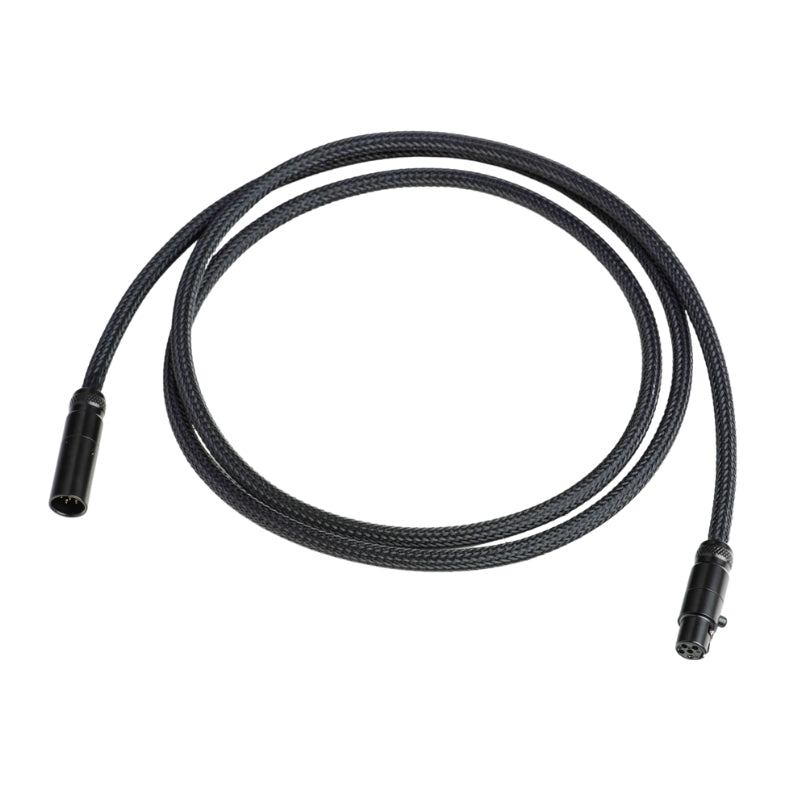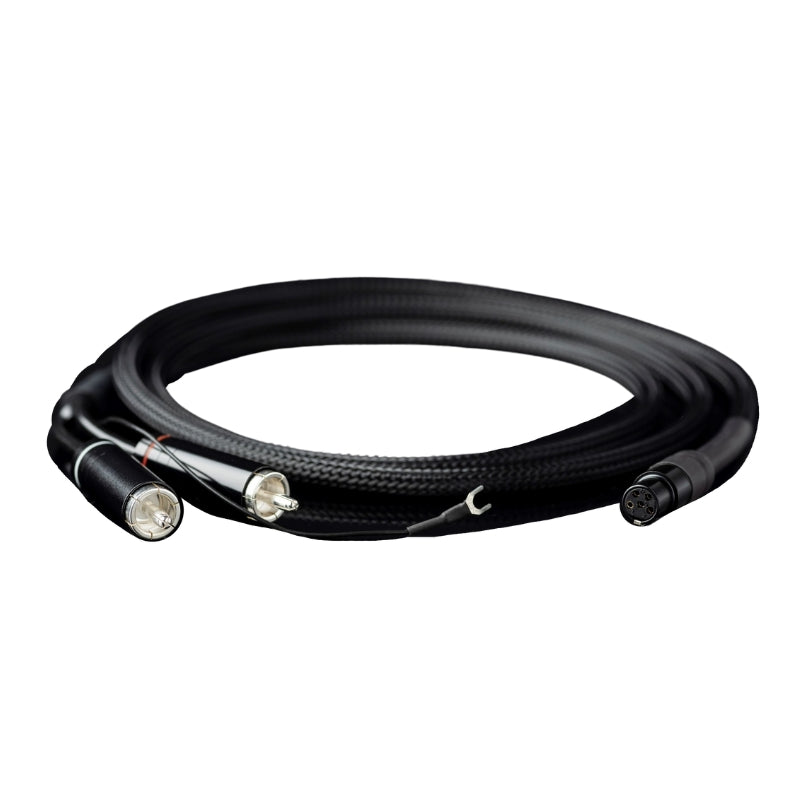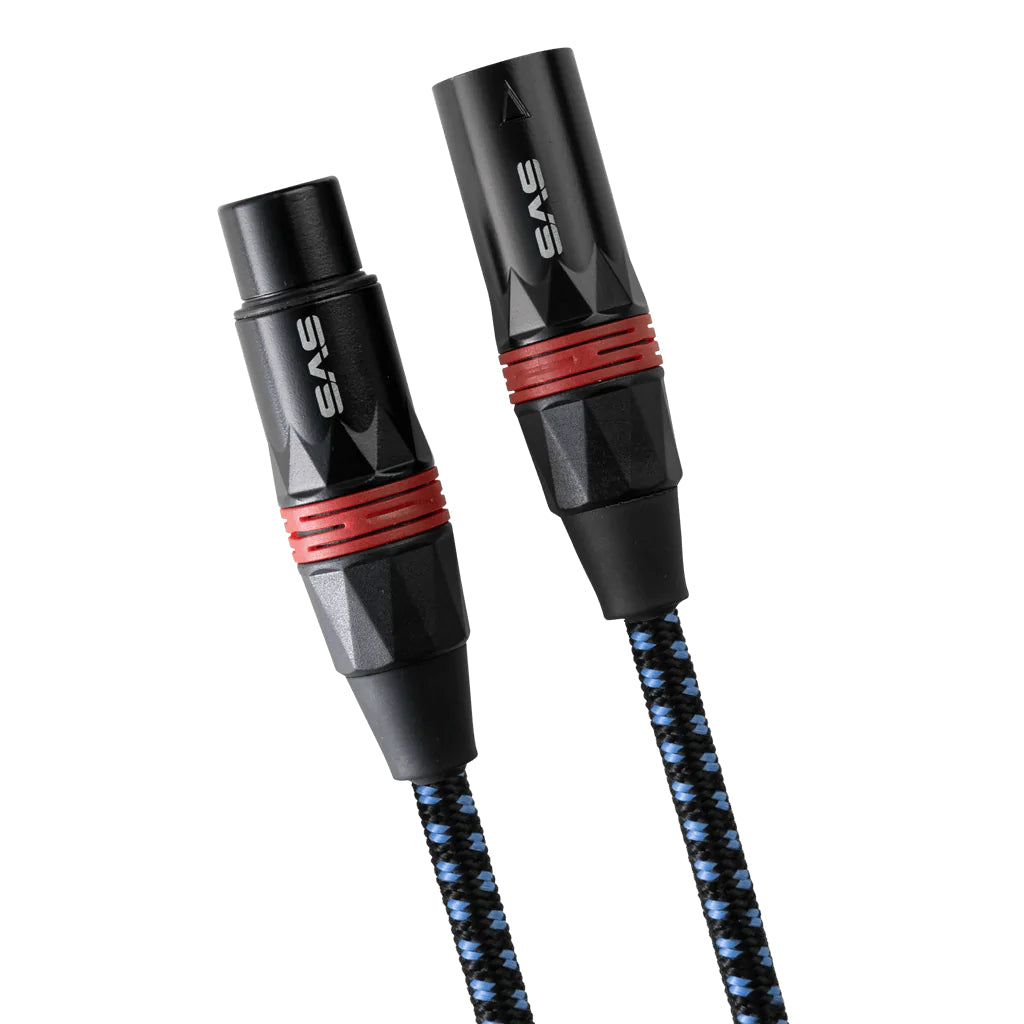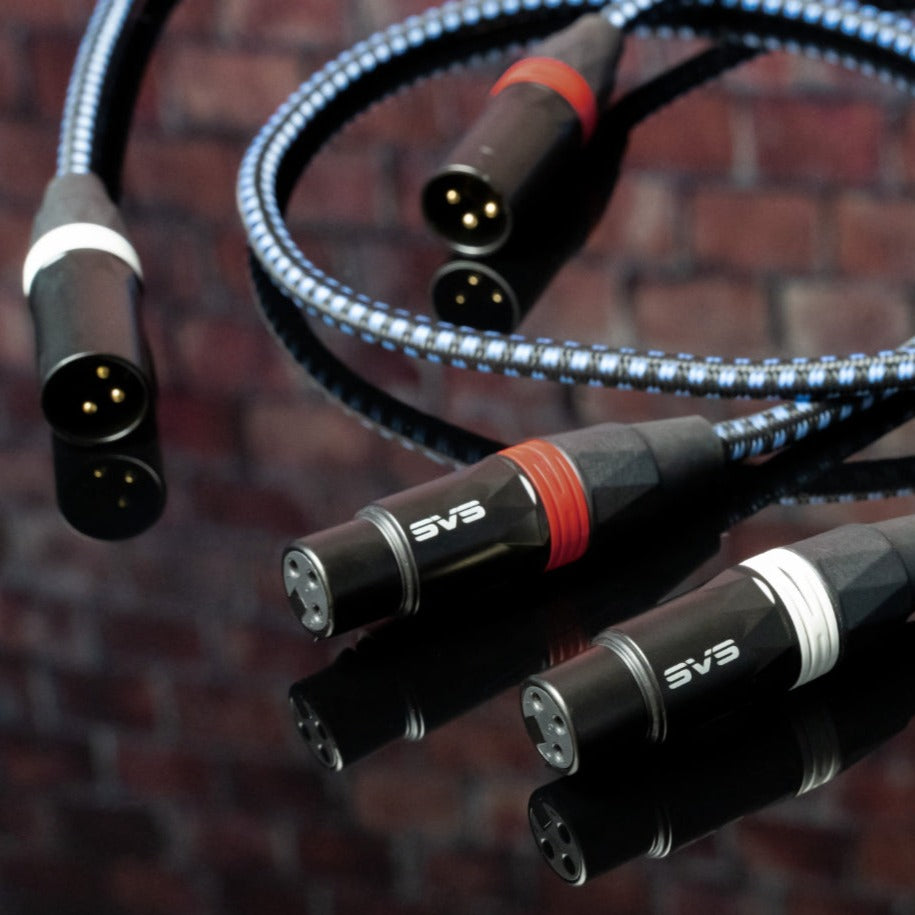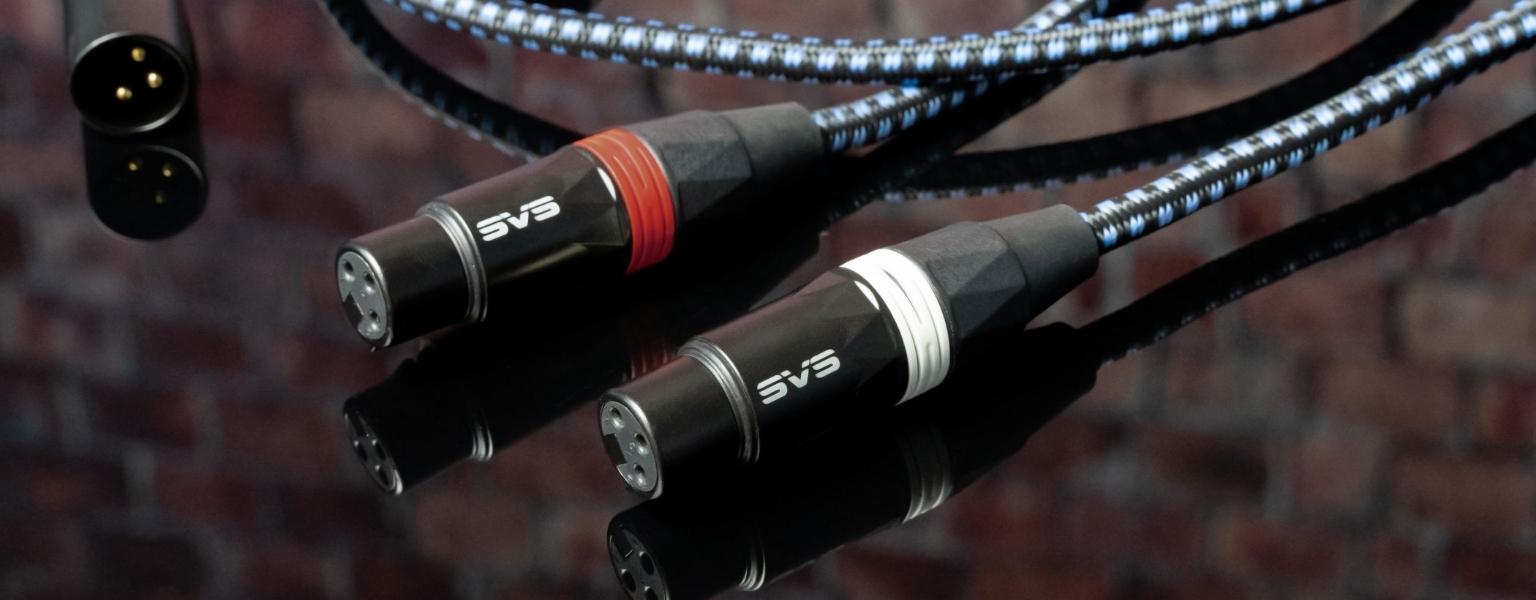
XLR Cables
Filters
25 products
TELL ME MORE ABOUT
XLR Cables
Known for their distinctive three-pin design, these cables have become synonymous with high-quality sound transmission in studios, live performances, and sophisticated audio setups.... Read More
Known for their distinctive three-pin design, these cables have become synonymous with high-quality sound transmission in studios, live performances, and sophisticated audio setups. The XLR cable's balanced nature ensures that audio signals are transmitted with minimal interference, preserving the integrity and clarity of the sound.
What Are XLR Cables?
XLR cables, often referred to as microphone cables or balanced audio cables, are a type of electrical connector primarily used in the professional audio industry. Characterized by their three-pin design, XLR cables are designed to transmit balanced audio signals, ensuring a clear and interference-free sound transmission. The term "XLR" originally stood for "X Series with Latch and Rubber," highlighting the cable's unique design features.
The three pins in an XLR cable serve distinct purposes: one pin carries the positive audio signal, the second carries the negative audio signal, and the third serves as the ground. This balanced system allows the cable to minimize noise and interference from external sources, making it ideal for environments where sound clarity is paramount.
Beyond just microphones, XLR cables are used in a variety of audio applications, including connecting mixers, amplifiers, and speakers in both studio and live sound settings. Their robust construction, locking mechanism, and ability to carry both low-level microphone and line-level signals make them a preferred choice for professionals. The design ensures that even over long distances, the integrity of the audio signal remains uncompromised, making XLR cables a staple in high-quality audio transmission.
The Different Types of XLR Cables
While the classic three-pin design is what most envision when thinking of XLR cables, the XLR family is more diverse, catering to various audio needs and equipment configurations.
-
3-Pin XLR: The most common type, used extensively for balanced audio signals, such as microphones and mixers. The three pins carry positive, negative, and ground signals, ensuring clear sound transmission with minimal interference.
-
4-Pin XLR: Often found in professional video equipment and lighting systems, the extra pin can be used for additional power or control signals, making it versatile for more complex setups.
-
5-Pin XLR: Primarily used in lighting and stereo audio applications, the two additional pins can carry extra data or control signals, allowing for more intricate configurations.
-
Mini XLR: A compact version of the traditional XLR, mini XLRs are used in smaller devices like lavalier microphones and certain headphone models, offering the same quality in a reduced size.
-
Gender Variations: XLR connectors come in both male and female versions. Typically, output ports use male connectors, while input ports use female connectors.
-
XLR Patch Cables: Shorter in length, these are designed for connecting equipment in close proximity, like devices in a rack setup.
Each type of XLR cable is designed with specific applications in mind, ensuring that professionals and enthusiasts alike have the right tool for their audio needs, regardless of the complexity of their setup.
How to Choose the Right XLR Cables
Selecting the appropriate XLR cable is essential for ensuring optimal audio performance and system compatibility.
We recommend you have a chat with one of our in-house experts if you're at all unsure about which cable to go with, but in the meantime, here are some key considerations to guide your choice:
Purpose and Application: Understand the primary use of the cable. For instance, if you're connecting a microphone to an audio interface, a standard 3-pin XLR would be suitable. However, for lighting or stereo setups, you might need a 5-pin variant.
Cable Length: Determine the distance between your devices. While XLR cables are adept at maintaining signal quality over long distances, it's still advisable to avoid excessively lengthy cables to minimize potential signal degradation.
Build Quality: A well-constructed XLR cable, made with high-quality materials, ensures durability and superior signal transmission. Look for cables with robust connectors and sturdy insulation.
Shielding: Effective shielding is crucial for XLR cables, given their professional use. Proper shielding protects the audio signal from external interference, ensuring clear and noise-free transmission.
Connector Quality: Gold-plated connectors offer enhanced conductivity and resistance to corrosion, ensuring a lasting connection.
Flexibility and Handling: Especially if you're using the cable in a mobile setup, like live performances, opt for cables that are flexible and resistant to wear and tear from frequent handling.
Brand Reputation: Trusted brands often guarantee consistent quality and performance. Research reviews and seek recommendations.
Final Thoughts
Whether you're setting up a studio, enhancing a live performance rig, or simply seeking the best for your audio equipment, the right XLR cable makes all the difference. If you're exploring an XLR cable for your setup and have any questions at all, don't hesitate to get in touch with the team.
Some Quick FAQ:
What is the purpose of a balanced XLR cable?
The purpose of a balanced XLR cable is to transmit audio signals while minimizing noise and interference. It achieves this by using three wires: a positive signal wire, a negative signal wire, and a ground wire. The balanced nature of the cable allows it to reject common mode noise and interference, resulting in a cleaner and more reliable audio signal.
Can I use XLR cables with a microphone?
Yes, XLR cables are commonly used with microphones. They provide a reliable and balanced connection between the microphone and the audio interface or mixer.
What is the difference between XLR male and XLR female connectors?
The main difference between XLR male and XLR female connectors is the type of pins they have. XLR male connectors have pins that plug into XLR female connectors, creating a secure connection. XLR female connectors have corresponding holes to receive the pins of XLR male connectors.
Can I connect two XLR cables together with an XLR to XLR cable?
Yes, you can connect two XLR cables together using an XLR to XLR cable. This is often done when you need to extend the length of the cable or connect two devices that have XLR connections.
What is an XLR interconnect?
An XLR interconnect is a cable used to connect audio devices that have XLR connections. It can be used to connect microphones, audio interfaces, mixers, and other audio equipment.
Are XLR cables only used for professional audio applications?
While XLR cables are commonly used in professional audio applications, they can also be used in home audio setups or any situation where a balanced audio connection is required.
Is it possible to use XLR cables for digital audio signals?
Yes, XLR cables can technically be used for both analog and digital audio applications - however, it may not be an option for some digital transmission applications.
Are XLR cables durable?
Yes, XLR cables are known for their durability. They are typically made with high-quality materials and designed to withstand regular use in professional audio environments. However, it is important to handle and store them properly to ensure their longevity.
NEED MORE GUIDANCE?
We are here to help
Check out some of our most commonly asked questions.
What do I need to play records?
Getting into vinyl? That’s awesome! We have some curated turntable Hi-Fi packs, with everything you'll need to get spinning right away. But if you want to build your own, read on for all the details.
First off, you'll need a turntable. It's the star of the show, so make sure it’s in good nick, with a decent cartridge and stylus (needle).
Next, there’s the phono preamp. Some turntables or amplifiers come with one built-in, but if yours doesn’t, you’ll need one as a bridge between your turntable and amplifier or powered speakers.
For the sound output, you’ve got two options. You can go with a traditional setup involving an integrated amplifier to take the signal from your phono preamp and power your passive speakers. Alternatively, you can opt for powered speakers, which have the amplifier built in – a handy all-in-one solution.
Speaking of speakers, good ones are a must for that rich, warm vinyl sound we all love. Whether you go for bookshelf or floorstanding speakers (or powered ones) depends on your space and budget.
And there you go! With these essentials, you’ll be ready to dive into your vinyl collection and enjoy that classic sound.
What can a wireless speaker do?
Wireless speakers are a game-changer for how you enjoy music and audio around the house. First off, they let you stream music wirelessly from your phone, tablet, or computer, so no more messing about with cables. You can easily play tunes from Spotify, Apple Music, Tidal or whatever streaming service you fancy.
If you’re into having music everywhere, many wireless speakers offer multi-room audio. You can sync them up to play the same music in every room or control what plays in each room individually, perfect for parties or just keeping the vibes consistent throughout your home.
Voice control is another brilliant feature. Many come with built-in assistants like Alexa, Google Assistant, or Siri. You can control your music with just your voice, ask for the weather, set reminders, or even control other smart home devices.
Sound quality? These little gadgets often pack a punch, delivering high-quality audio that can rival traditional wired setups. Some even offer 360-degree sound, filling the room with music from every angle.
In a nutshell, wireless speakers bring flexibility, convenience, and top-notch sound to your audio experience, making them a fantastic addition to any home. Whether you’re hosting a party, working from home, or just chilling out, they make listening to music a breeze.
How do you choose the right speaker & amplifier combination?
Deciding on a good speaker and amplifier combination is like putting together a perfect wine and cheese pairing—it’s all about balance and harmony. Here’s a conversational guide to help you through it:
First, consider your speakers. These are your main players, so you want to choose ones that fit your space and listening preferences. If you love deep bass and have a bit of room, floorstanding speakers might be your go-to. For smaller spaces or a more subtle look, bookshelf speakers are fantastic.
Now, onto the amplifier. This is where things get interesting. Your amp needs to match your speakers in terms of power and impedance. Check the wattage ratings on your speakers—your amplifier should provide enough power to drive them properly. Too little power and you’ll be missing out on sound quality; too much, and you risk damaging your speakers.
Next, think about the impedance (measured in ohms). Your amp and speakers should be compatible here too. Most speakers are rated at 8 ohms, but some can be 4 or 6. Make sure your amplifier can handle the impedance of your speakers to avoid any performance issues.
Another important factor is the type of sound you’re after. Some amps are known for their warm, rich tones, while others might be more neutral or even slightly bright. It’s a bit like choosing between a vinyl record and a digital stream or CD —each has its own charm. If possible, listen to different amp and speaker combinations to see what sounds best to your ears.
If purchasing online, note that at LE, we have made recommendations on speaker & amplifier combinations that we think sound wonderful together within each product listing.
Don’t forget about connectivity and features. Modern amplifiers often come with a host of options like Bluetooth, Wi-Fi streaming, and various inputs for all your devices. Make sure your amp has the inputs you need for your turntable, CD player, or streaming device.
Finally, consider your budget. Great sound doesn’t always mean breaking the bank, but be prepared to invest to get a quality setup that will last.
In the end, trust your ears. Listen to a few combinations if you can, and go with what makes your music sound the best to you.
Why do I need a headphone amplifier?
If you’re diving into the world of high-quality audio, a headphone amplifier can be a real game-changer. Think of it like this: most standard devices, like your smartphone or laptop, just don’t have the oomph needed to drive headphones properly. They might get the job done, but they won’t do your music justice. A headphone amp gives your headphones the power they need, ensuring you get the volume and clarity that really makes your music shine.
It’s not just about making things louder, either. A good headphone amp can significantly improve sound quality. You’ll get clearer highs, richer mids, and tighter bass, making your favourite tracks sound even better. You might notice details you’ve never heard before, especially if you’re listening to high-resolution audio files.
Premium headphones often have higher impedance, meaning they require more power than your typical audio source can provide. A headphone amp can handle this with ease, making sure your headphones perform at their absolute best. Plus, many amps come with extra features like bass boost, equalisation, and gain control, giving you more ways to tweak the sound to your liking.
In short, if you’re passionate about your music and want to hear it in the best possible way, a headphone amplifier is definitely worth considering. It’s all about unlocking the full potential of your gear and really getting the most out of your listening experience.
Where should I start when designing a home cinema?
Designing your own home cinema? That's awesome! We are here to help walk you through the process, but as a starting point, here’s what we would recommend and where to kick things off:
First up, pick your spot. For most people this is your existing lounge room, but if you have an underused garage, or spare bedroom, then you have an opportunity to create your very own true Home Cinema experience. Find a room that’s just right—not too cramped and ideally away from noisy areas. This sets the stage for that immersive movie experience.
Next, think about how you’ll set things up. Plan where your seats will go and where to place your projector screen for the best view from every angle. It’s all about creating that comfy, cinematic vibe.
Sound matters, too. Consider if you want a wireless system for simplicity or a full surround sound speaker system with AV receiver for that surround-sound thrill. Think about soundproofing or adding acoustic panels or thick carpets to really amp up the audio quality of the room.
Now, onto the screen. Decide between a crisp TV or a projector setup, depending on your room size and personal style. Maybe even throw in some dimmable lights or smart lighting to set the mood just right.
And hey, don’t forget comfort. Invest in plush cinema seating and think about the décor—whether it’s movie posters, blackout curtains, or popcorn machine & bar area, whatever gives you that true cinema feel.
Lastly, tech it up! Make sure everything—from your Blu-Ray player & Apple TV to your gaming consoles—is set to sync perfectly with your new setup.
With these steps, you’re on your way to creating a home cinema that’s not just a space, but an experience. Enjoy movie nights like never before!

